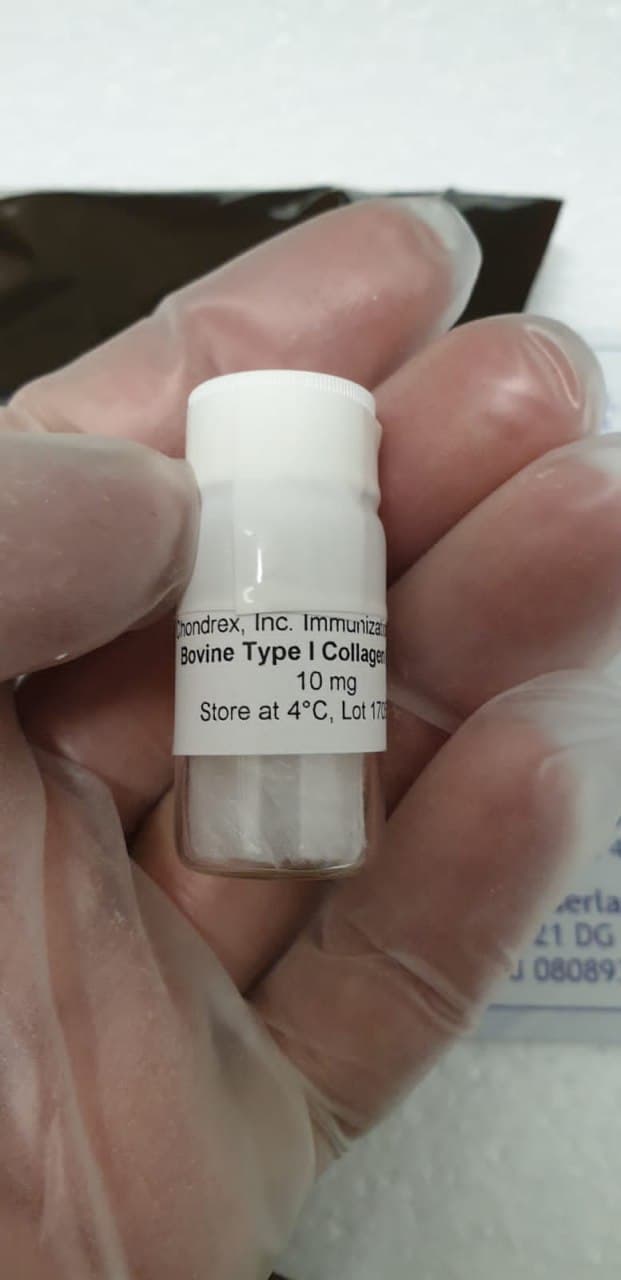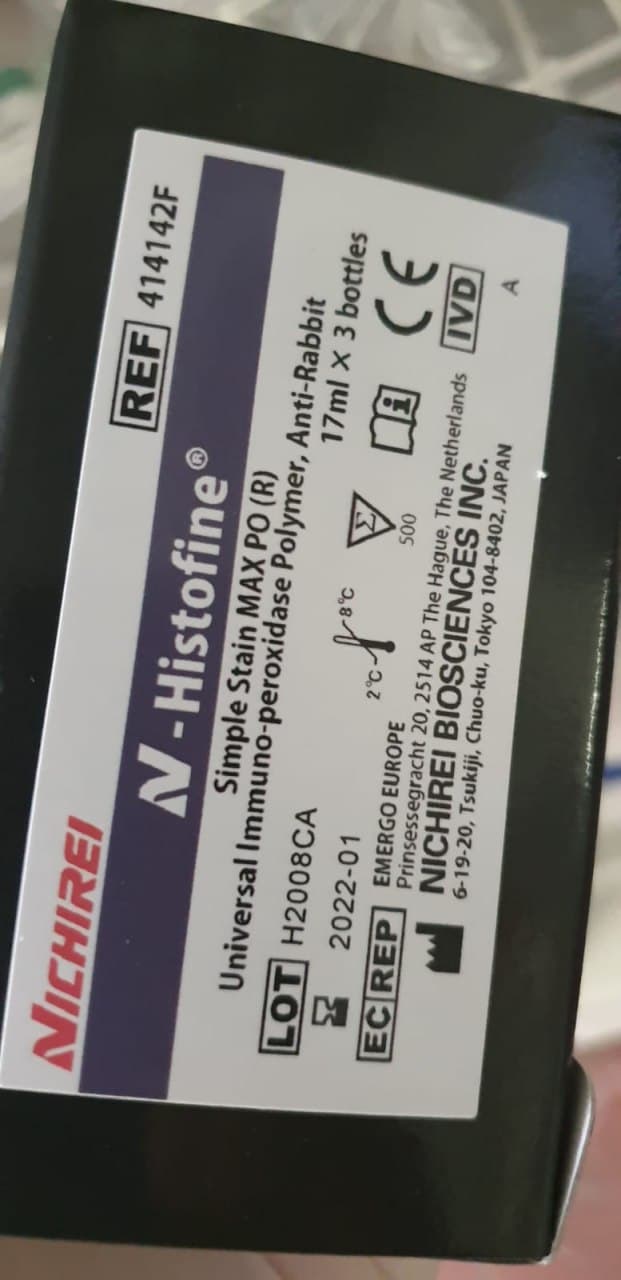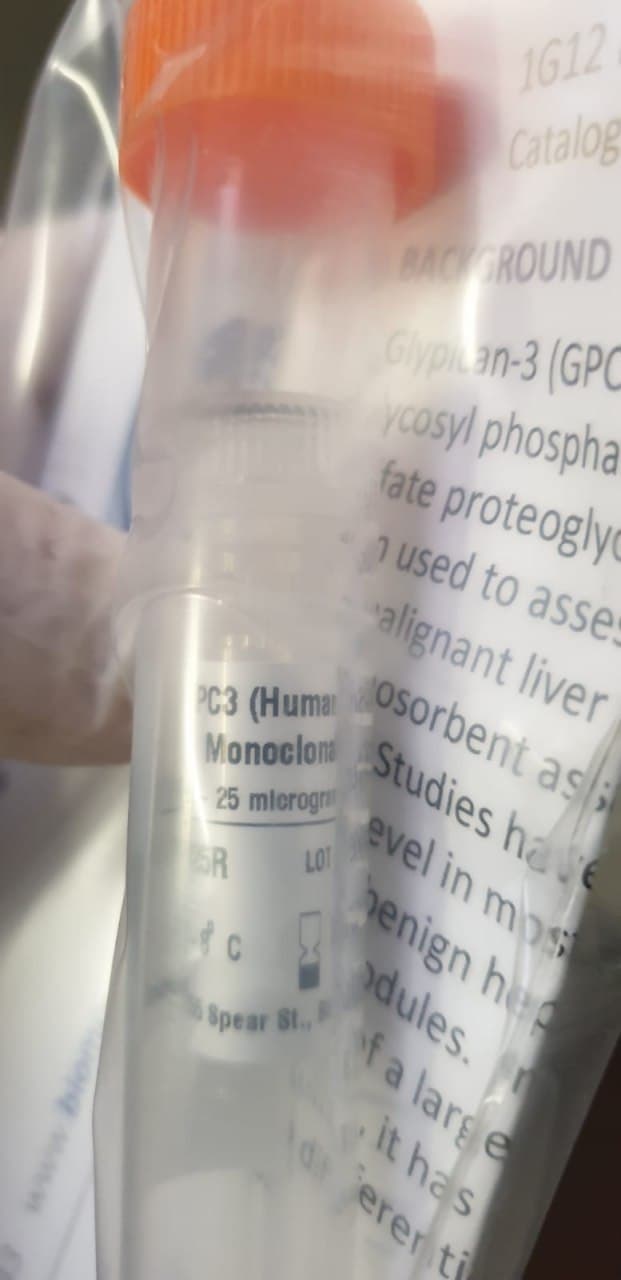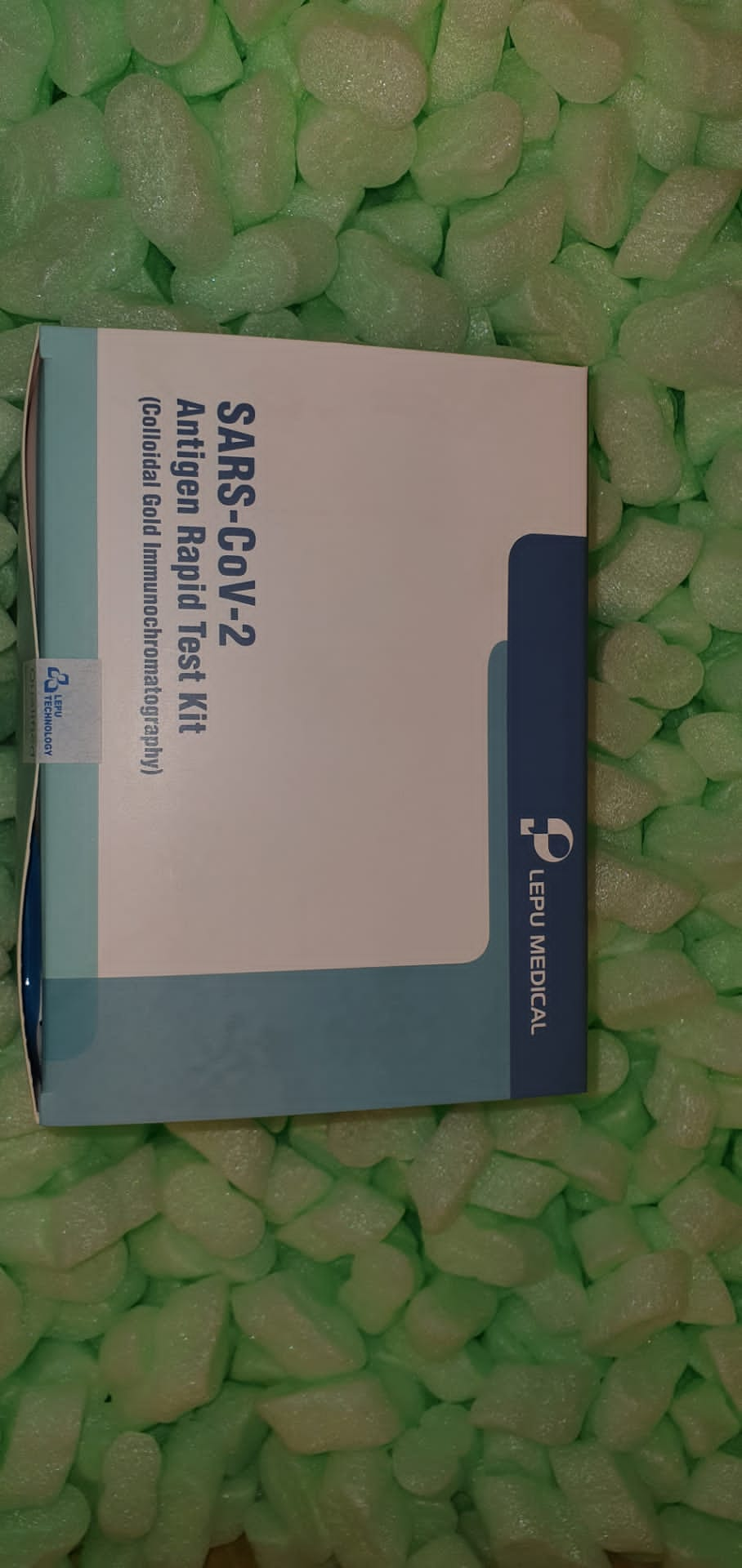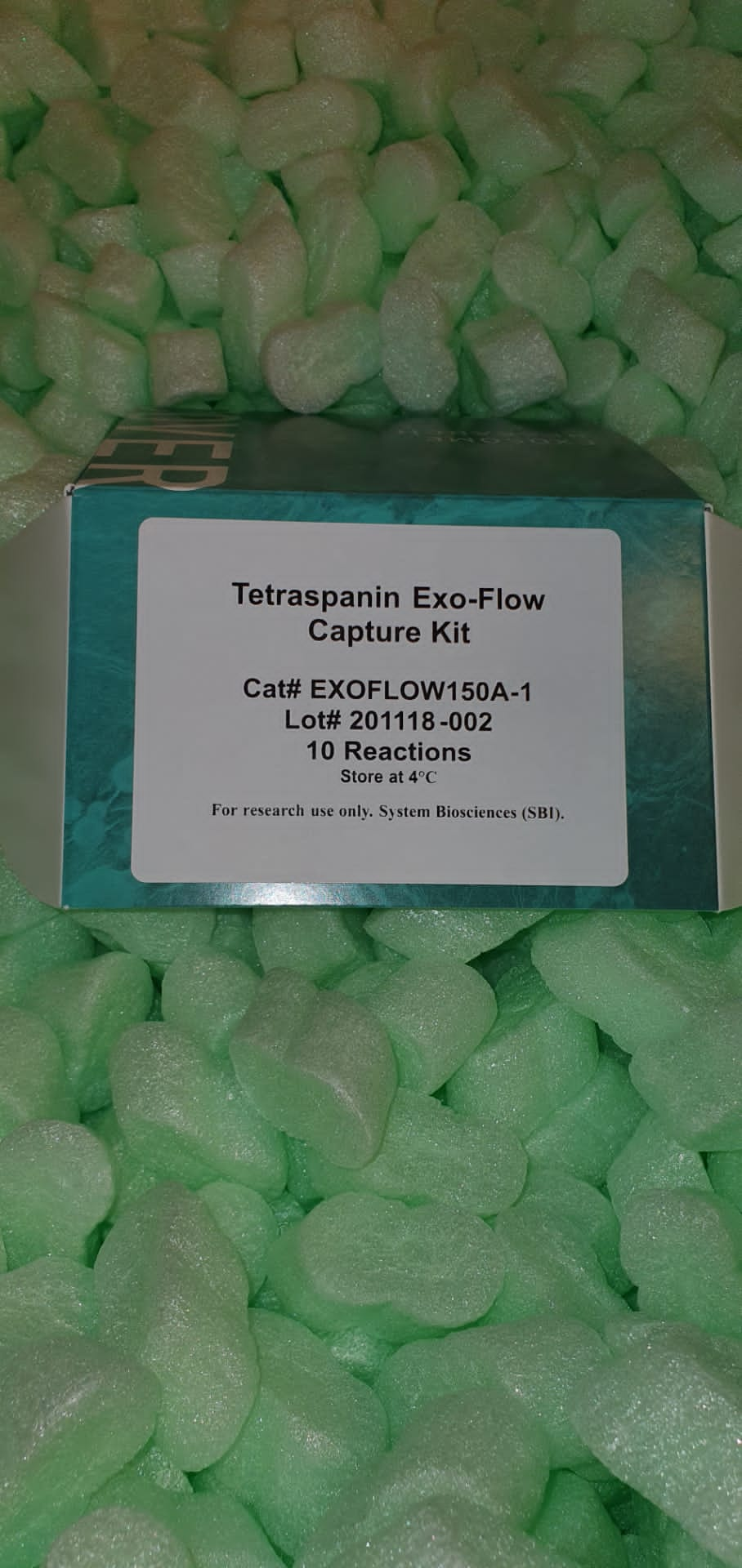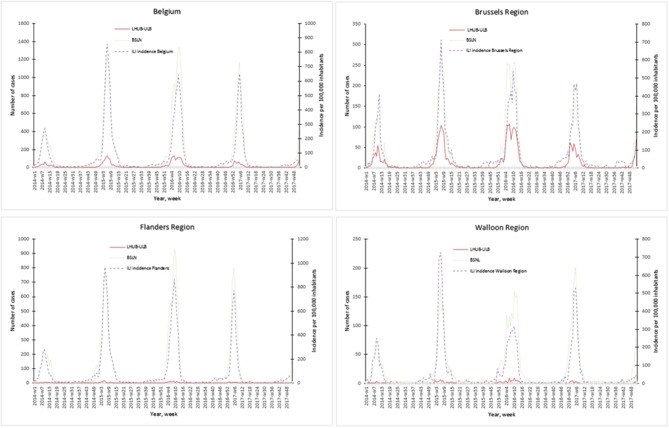The variety and complexity of biotechnological applications are continually rising, with ever increasing ranges of manufacturing hosts, cultivation situations and measurement duties. Consequently, many analytical and cultivation programs for biotechnology and bioprocess engineering, similar to microfluidic units or bioreactors, are tailored to exactly fulfill the necessities of particular measurements or cultivation duties. Additive manufacturing (AM) technologies supply the likelihood of fabricating tailored 3D laboratory tools instantly from CAD designs with beforehand inaccessible ranges of freedom in phrases of structural complexity.
This assessment discusses the historic background of these technologies, their most promising present implementations and the related workflows, fabrication processes and materials specs, along with some of the key challenges related to utilizing AM in biotechnology/bioprocess engineering. To illustrate the good potential of AM, chosen examples in microfluidic units, 3D-bioprinting/biofabrication and bioprocess engineering are highlighted.
Cuban advances in biotech have made headlines, notably for the reason that US-Cuba rapprochement and signing of the historic memorandum of understanding between the US Department of Health and Human Services and Cuba’s Ministry of Public Health in June. Some 34 Cuban establishments with 22,000 workers are the spine of a biotech trade that dates to the early 1980s, acquiring novel merchandise which have sparked curiosity amongst potential international companions. While a quantity of these Cuban merchandise are registered in numerous nations, their testing in the USA stays ensnared in the pink tape of embargo legal guidelines that are inclined to make buyers skittish and thus delay, if not curtail, joint analysis and scientific trial applications to the FDA.
Safety Profile of Anticancer and Immune-Modulating Biotech Drugs Used in a Real World Setting in Campania Region (Italy): BIO-Cam Observational Study.
To examine the prevalence of hostile occasions (AEs) in naïve sufferers receiving biotech medication. Design: A potential observational examine. Setting: Onco-hematology, Hepato-gastroenterology, Rheumatology, Dermatology, and Neurology Units in Campania Region (Italy). Participants: 775 sufferers (53.81% feminine) with imply age 56.0 (SD 15.2). The imply follow-up/affected person was 3.48 (95% confidence interval 3.13-3.84). Main consequence measures: We collected all AEs related to biotech medication, together with severe infections and malignancies.
Serious AEs have been outlined in keeping with the International Conference on Harmonization of Technical Requirements for Registration of Pharmaceuticals for Human Use, scientific security knowledge administration: definitions and requirements for expedited reporting E2A guideline. Results: The majority of the examine inhabitants was enrolled in Onco-hematology and Rheumatology Units and the commonest analysis have been hematological malignancies, adopted by rheumatoid arthritis, colorectal most cancers, breast most cancers, and psoriatic arthritis.
The mostly prescribed biotech medication have been rituximab, bevacizumab, infliximab, trastuzumab, adalimumab, and cetuximab. Out of 775 sufferers, 320 skilled a minimum of one AE. Most of sufferers skilled AEs to cetuximab remedy, rituximab and trastuzumab. Comparing feminine and male inhabitants, our findings highlighted a statistically important distinction in phrases of AEs for adalimumab (35.90% vs. 7.41%, p < 0.001) and etanercept (27.59% vs. 10.00%, p = 0.023). Considering all biotech medication, we noticed a peak for all AEs prevalence at follow-up 91-180 days class. Bevacizumab, brentuximab, rituximab, trastuzumab and cetuximab have been extra generally related to severe hostile occasions; most of these have been probably associated to biotech medication, in keeping with causality evaluation.
Three circumstances of severe infections occurred. Conclusions: The outcomes of our examine demonstrated that almost all of AEs weren’t severe and anticipated. Few circumstances of severe infections occurred, whereas no case of malignancy did. Overall, the protection profile of biotech medication used in our inhabitants was much like these noticed in pivotal trials. Notwithstanding the optimistic outcomes of our examine, some security issues nonetheless stay unresolved. In order to gather extra effectiveness and security knowledge on biotech medication, the gathering and evaluation of actual world knowledge needs to be endorsed in addition to the administration of post-authorization research.

What Will Be the Benefits of Biotech Wheat for European Agriculture?
In European nations, wheat occupies the biggest crop space with excessive yielding manufacturing. France, a significant producer and exporter in Europe, ranks the fifth producer worldwide. Biotic stresses are European farmers’ main challenges (fungal and viral ailments, and insect pests) adopted by abiotic ones similar to drought and grain protein composition. During the final 40 years, 1136 scientific articles on biotech wheat have been printed by USA adopted by China, Australia, Canada, and European Union with the UK. European analysis focuses on pests and ailments resistances utilizing broadly marker-assisted choice (MAS). Transgenesis is used in fundamental analysis to develop resistance towards some fungi (Fusarium head blight) whereas RNA interference (RNAi) silencing is used towards some fungi and virus.
 Luciferase Reporter Gene Assay Kit |
|
Z5030003 |
Biochain |
1,000 assays |
EUR 1118 |
 SuperLight™ Luciferase Reporter Gene Assay Kit |
|
SLLU-01K |
BioAssay Systems |
1000 |
EUR 459 |
|
Description: Bright bioluminescent reagent system for rapid quantitation of luciferase reporter gene expression in transfected cells and high-throughput drug screens. Key Features: High sensitivity and wide detection range. Detection of as little of 2 fg luciferase and as few as 4 cells. Plus, the emitted light is linear over seven orders of magnitude. Compatible with routine laboratory and HTS formats. Assays can be performed in tubes or microplates, on LJL Analyst, Berthold Luminometer, Top-Count, MicroBeta counters, chemiluminescent image plate readers (CLIPR/LeadSeeker). Assay reagents compatible with all liquid handling systems. Fast and convenient. Homogeneous "mix-and-measure" assay allows detection of luciferase levels within 10 minutes. The optimally combined reagent system allows a single addition step, and simultaneous cell lysis and detection. Robust and amenable to HTS. Z factors of 0.6 to 0.8 are observed in 96-well and 384-well plates. Can be readily automated on HTS liquid handling systems. Method: Luminescence. Samples: Cells etc. Species: All. Procedure: Assay takes 2 min. Kit size: 1000 tests. Detection limit: 2 fg luciferase. |
 SuperLight™ Luciferase Reporter Gene Assay Kit |
|
SLLU-200 |
BioAssay Systems |
200 |
EUR 169 |
|
Description: Bright bioluminescent reagent system for rapid quantitation of luciferase reporter gene expression in transfected cells and high-throughput drug screens. Key Features: High sensitivity and wide detection range. Detection of as little of 2 fg luciferase and as few as 4 cells. Plus, the emitted light is linear over seven orders of magnitude. Compatible with routine laboratory and HTS formats. Assays can be performed in tubes or microplates, on LJL Analyst, Berthold Luminometer, Top-Count, MicroBeta counters, chemiluminescent image plate readers (CLIPR/LeadSeeker). Assay reagents compatible with all liquid handling systems. Fast and convenient. Homogeneous "mix-and-measure" assay allows detection of luciferase levels within 10 minutes. The optimally combined reagent system allows a single addition step, and simultaneous cell lysis and detection. Robust and amenable to HTS. Z factors of 0.6 to 0.8 are observed in 96-well and 384-well plates. Can be readily automated on HTS liquid handling systems. Method: Luminescence. Samples: Cells etc. Species: All. Procedure: Assay takes 2 min. Kit size: 1000 tests. Detection limit: 2 fg luciferase. |
 SuperLight™ Luciferase Reporter Gene Assay Kit |
|
SLLU-500 |
BioAssay Systems |
500 |
EUR 299 |
|
Description: Bright bioluminescent reagent system for rapid quantitation of luciferase reporter gene expression in transfected cells and high-throughput drug screens. Key Features: High sensitivity and wide detection range. Detection of as little of 2 fg luciferase and as few as 4 cells. Plus, the emitted light is linear over seven orders of magnitude. Compatible with routine laboratory and HTS formats. Assays can be performed in tubes or microplates, on LJL Analyst, Berthold Luminometer, Top-Count, MicroBeta counters, chemiluminescent image plate readers (CLIPR/LeadSeeker). Assay reagents compatible with all liquid handling systems. Fast and convenient. Homogeneous "mix-and-measure" assay allows detection of luciferase levels within 10 minutes. The optimally combined reagent system allows a single addition step, and simultaneous cell lysis and detection. Robust and amenable to HTS. Z factors of 0.6 to 0.8 are observed in 96-well and 384-well plates. Can be readily automated on HTS liquid handling systems. Method: Luminescence. Samples: Cells etc. Species: All. Procedure: Assay takes 2 min. Kit size: 1000 tests. Detection limit: 2 fg luciferase. |
 SuperLight™ Dual Luciferase Reporter Gene Assay Kit |
|
SLDL-100 |
BioAssay Systems |
100 |
EUR 189 |
|
Description: Bioluminescent reagent system for rapid quantitation of firelfy and Ranilla luciferase reporter gene expression in transfected cells. Key Features: High sensitivity and wide detection range. Detection of as little of 2 fg luciferase. Compatible with routine laboratory and HTS formats. Assays can be performed in tubes or microplates, and measured with any luminometer. Can be readily automated on HTS liquid handling systems. Fast and convenient. Three step assay allows detection of dual luciferase levels within 20 minutes. Method: Luminescence. Samples: Cells etc. Species: All. Procedure: Assay takes 20 min. Kit size: 100 tests. Detection limit: 2 fg luciferase. |
 Amplite® Luciferase Reporter Gene Assay Kit *Bright Glow* |
|
12519 |
AAT Bioquest |
10 plates |
EUR 446 |
 Amplite® Luciferase Reporter Gene Assay Kit *Bright Glow* |
|
12518-1plate |
AAT Bioquest |
1 plate |
EUR 166 |
|
|
|
Description: Common reporter genes include beta-galactosidase, beta-glucuronidase and luciferase. |
 Amplite® Luciferase Reporter Gene Assay Kit *Bright Glow* |
|
12519-10plates |
AAT Bioquest |
10 plates |
EUR 446 |
|
|
|
Description: Common reporter genes include beta-galactosidase, beta-glucuronidase and luciferase. |
 Amplite® Luciferase Reporter Gene Assay Kit *Bright Glow* |
|
12520-100plates |
AAT Bioquest |
100 plates |
EUR 3321 |
|
|
|
Description: Common reporter genes include beta-galactosidase, beta-glucuronidase and luciferase. |
 Amplite® Gaussia Luciferase Reporter Gene Assay Kit *Bright Glow* |
|
12532 |
AAT Bioquest |
100 plates |
EUR 4447 |
 Amplite® Renilla Luciferase Reporter Gene Assay Kit *Bright Glow* |
|
12536 |
AAT Bioquest |
10 plates |
EUR 1070 |
 Luciferase Reporter Assay Kit |
|
55R-1540 |
Fitzgerald |
200 assays |
EUR 294 |
|
Description: Assay Kit for detection of Luciferase Reporter in the research laboratory |
 Luciferase Reporter Assay Kit |
|
K801-200 |
Biovision |
each |
EUR 235.2 |
 Luciferase Reporter Assay Kit |
|
K2181-200 |
ApexBio |
200 assays |
EUR 217.2 |
 Amplite® Gaussia Luciferase Reporter Gene Assay Kit *Bright Glow* |
|
12530-1plate |
AAT Bioquest |
1 plate |
EUR 222 |
|
|
|
Description: Common reporter genes include beta-galactosidase, beta-glucuronidase and luciferase. |
 Amplite® Gaussia Luciferase Reporter Gene Assay Kit *Bright Glow* |
|
12531-10Plates |
AAT Bioquest |
10 Plates |
EUR 846 |
|
|
|
Description: Common reporter genes include beta-galactosidase, beta-glucuronidase and luciferase. |
 Amplite® Gaussia Luciferase Reporter Gene Assay Kit *Bright Glow* |
|
12532-100plates |
AAT Bioquest |
100 plates |
EUR 4447 |
|
|
|
Description: Common reporter genes include beta-galactosidase, beta-glucuronidase and luciferase. |
 Amplite® Renilla Luciferase Reporter Gene Assay Kit *Bright Glow* |
|
12535-1plate |
AAT Bioquest |
1 plate |
EUR 222 |
|
|
|
Description: Common reporter genes include beta-galactosidase, beta-glucuronidase and luciferase. |
 Amplite® Renilla Luciferase Reporter Gene Assay Kit *Bright Glow* |
|
12536-10plates |
AAT Bioquest |
10 plates |
EUR 1070 |
|
|
|
Description: Common reporter genes include beta-galactosidase, beta-glucuronidase and luciferase. |
 Amplite® Renilla Luciferase Reporter Gene Assay Kit *Bright Glow* |
|
12537-100plates |
AAT Bioquest |
100 plates |
EUR 4447 |
|
|
|
Description: Common reporter genes include beta-galactosidase, beta-glucuronidase and luciferase. |
 Dual Luciferase Reporter Assay Kit |
|
DL101-01 |
Vazyme |
100 rxn |
EUR 309.6 |
 ARE Luciferase Reporter Lentivirus |
|
79869 |
BPS Bioscience |
500 µl x 2 |
EUR 875 |
|
Description: The Nrf2 antioxidant response pathway plays an important role in the cellular antioxidant defense. Nrf2, a basic leucine zipper transcription factor, induces the expression of antioxidant and phase II enzymes by binding to the ARE (antioxidant response element) region of the gene promoter. Under basal conditions, Nrf2 is retained in the cytosol by binding to the cytoskeletal protein Keap1. Upon exposure to oxidative stress or other ARE activators, Nrf2 is released from Keap1 and translocates to the nucleus, where it can bind to the ARE, leading to the expression of antioxidant and phase II enzymes that protect the cell from oxidative damage.
The ARE Luciferase Reporter Lentivirus are replication incompetent, HIV-based, VSV-G pseudotyped lentiviral particles that are ready to be transduced into almost all types of mammalian cells, including primary and non-dividing cells. The particles contain a firefly luciferase gene driven by ARE located upstream of the minimal TATA promoter. After transduction, activation of the Nrf2 antioxidant response pathway in the target cells can be monitored by measuring the luciferase activity. |
 SRE Luciferase Reporter Lentivirus |
|
78627 |
BPS Bioscience |
500 µl x 2 |
EUR 835 |
|
Description: The SRE (Serum Response Element) Luciferase Reporter Lentiviruses are replication incompetent, HIV-based, VSV-G pseudotyped lentiviral particles that are ready to be transduced into almost all types of mammalian cells, including primary and non-dividing cells. The particles contain a firefly luciferase gene driven by the Serum Response Element located upstream of the minimal TATA promoter . After transduction, activation of the MAPK/ERK signaling pathway in the target cells can be monitored by measuring the luciferase activity. |
 Myc Luciferase Reporter Lentivirus |
|
78628 |
BPS Bioscience |
500 µl x 2 |
EUR 835 |
|
Description: The Myc Luciferase Reporter Lentiviruses are replication incompetent, HIV-based, VSV-G pseudotyped lentiviral particles that are ready to transduce almost all types of mammalian cells, including primary and non-dividing cells. The particles contain a firefly luciferase gene driven by the Myc response element located upstream of the minimal TATA promoter and an antibiotic selection gene (puromycin) for the selection of stable clones. After transduction, the Myc signaling pathway in the target cells can be monitored by measuring the luciferase activity. |
 UAS Luciferase Reporter Lentivirus |
|
78631 |
BPS Bioscience |
500 µl x 2 |
EUR 835 |
|
Description: The UAS (Upstream Activation Sequence) Luciferase Reporter Lentiviruses are replication incompetent, HIV-based, VSV-G pseudotyped lentiviral particles that are ready to transduce almost all types of mammalian cells, including primary and non-dividing cells. The particles contain a firefly luciferase gene driven by a multimerized GAL4 upstream activation sequence (UAS) located upstream of the minimal TATA promoter and an antibiotic selection gene (puromycin) for the selection of stable clones. After transduction, the UAS-controlled signaling pathway in the target cells can be monitored by measuring the luciferase activity. |
 p53 Luciferase Reporter Lentivirus |
|
78666 |
BPS Bioscience |
500 µl x 2 |
EUR 835 |
|
Description: The p53 Luciferase Reporter Lentiviruses are replication incompetent, HIV-based, VSV-G pseudotyped lentiviral particles that are ready to transduce most types of mammalian cells, including primary and non-dividing cells. The particles contain a firefly luciferase gene driven by p53 response elements located upstream of the minimal TATA promoter (Figure 1) and an antibiotic selection gene (puromycin) for the selection of stable clones. After transduction, p53-regulated gene expression in the target cells can be monitored by measuring the luciferase activity. |
 HRE Luciferase Reporter Lentivirus |
|
78668 |
BPS Bioscience |
500 µl x 2 |
EUR 835 |
|
Description: The Hypoxia Response Element (HRE) Luciferase Reporter Lentiviruses are replication incompetent, HIV-based, VSV-G pseudotyped lentiviral particles that are ready to transduce most types of mammalian cells, including primary and non-dividing cells. The particles contain a firefly luciferase gene driven by four copies of a hypoxia response elements (HRE) located upstream of the minimal TATA promoter (Figure 1) and an antibiotic selection gene (puromycin) for the selection of stable clones. After transduction, the induction of hypoxia in the target cells can be monitored by measuring the luciferase activity. |
 TEAD Luciferase Reporter Lentivirus |
|
79833 |
BPS Bioscience |
500 µl x 2 |
EUR 875 |
|
Description: The Hippo pathway regulates cell proliferation and cell death. It is activated by high cell density and cell stress to stop cell proliferation and induce apoptosis. The mammalian Hippo pathway comprises MST kinases and LATS kinases. When the Hippo pathway is activated, MST kinases phosphorylate LATS kinases, which phosphorylate transcriptional co-activators YAP and TAZ. Unphosphorylated YAP and TAZ remain in nucleus and interact with TEAD/TEF transcriptional factors to turn on cell cycle-promoting gene transcription. However, when phosphorylated, YAP and TAZ are recruited from the nucleus to the cytosol, so that the YAP and TAZ-dependent gene transcription is turned off. Dysfunction of the Hippo pathway is frequently detected in human cancer and its down-regulation correlates with the aggressive properties of cancer cells and poor prognosis.
The TEAD Luciferase Reporter Lentivirus are replication incompetent, HIV-based, VSV-G pseudotyped lentiviral particles that are ready to be transduced into almost all types of mammalian cells, including primary and non-dividing cells. The particles contain a firefly luciferase gene driven by the TEAD response elements located upstream of the minimal TATA promoter. After transduction, activation of the Hippo pathway in the target cells can be monitored by measuring the luciferase activity._x000D_ |
 STAT3 Luciferase Reporter Lentivirus |
|
79744 |
BPS Bioscience |
500 µl x 2 |
EUR 860 |
|
Description: The STAT3 Luciferase Reporter Lentivirus are replication incompetent, HIV-based, VSV-G pseudotyped lentiviral particles that are ready to be transduced into almost all types of mammalian cells, including primary and non-dividing cells. The particles contain a firefly luciferase gene under the control of STAT3-responsive element located upstream of the minimal TATA promoter. After transduction, activation of the STAT3 signaling pathway in the target cells can be monitored by measuring the luciferase activity._x000D_ |
 STAT5 Luciferase Reporter Lentivirus |
|
79745 |
BPS Bioscience |
500 µl x 2 |
EUR 835 |
|
Description: The STAT5 Luciferase Reporter Lentivirus are replication incompetent, HIV-based, VSV-G pseudotyped lentiviral particles that are ready to be transduced into almost all types of mammalian cells, including primary and non-dividing cells. The particles contain a firefly luciferase gene under the control of STAT5-responsive element located upstream of the minimal TATA promoter. After transduction, activation of the STAT5 signaling pathway in the target cells can be monitored by measuring the luciferase activity. |
 NF-κB Luciferase Reporter Lentivirus |
|
79564 |
BPS Bioscience |
500 µl x 2 |
EUR 875 |
|
Description: The NF-κB Luciferase Reporter Lentivirus are replication incompetent, HIV-based, VSV-G pseudotyped lentiviral particles that are ready to be transduced into almost all types of mammalian cells, including primary and non-dividing cells. The particles contain a firefly luciferase gene driven by four copies of the NF-κB response element located upstream of the minimal TATA promoter. After transduction, activation of the NF-κB signaling pathway in the target cells can be monitored by measuring the luciferase activity. |
) Bald VSV Delta G (Luciferase Reporter) |
|
78636-1 |
BPS Bioscience |
100 µl |
EUR 395 |
|
Description: The bald VSV Delta G (Luciferase Reporter) was produced without envelope glycoproteins. It contains the firefly luciferase gene as the reporter. The bald VSV Delta G (Luciferase Reporter) can serve as a negative control when studying virus entry initiated by specific interactions between virus particles and receptors. |
) Bald VSV Delta G (Luciferase Reporter) |
|
78636-2 |
BPS Bioscience |
500 µl x 2 |
EUR 1995 |
|
Description: The bald VSV Delta G (Luciferase Reporter) was produced without envelope glycoproteins. It contains the firefly luciferase gene as the reporter. The bald VSV Delta G (Luciferase Reporter) can serve as a negative control when studying virus entry initiated by specific interactions between virus particles and receptors. |
 CRE/CREB Luciferase Reporter Lentivirus |
|
79580 |
BPS Bioscience |
500 µl x 2 |
EUR 835 |
|
Description: The main role of the cAMP response element, or CRE, is mediating the effects of Protein Kinase A (PKA) by way of transcription. Upon phosphorylation, CREB forms a functionally active dimer that binds the CRE element within the promoters of target genes and activates transcription. CRE is at the focus of many extracellular and intracellular signaling pathways, including cAMP, calcium, GPCR (G-protein coupled receptors) and neurotrophins. The cAMP/PKA signaling pathway is critical to numerous life processes in living organisms.The CRE/CREB Luciferase Reporter Lentivirus are replication incompetent, HIV-based, VSV-G pseudotyped lentiviral particles that are ready to be transduced into almost all types of mammalian cells, including primary and non-dividing cells. The particles contain a firefly luciferase gene driven by multimerized cAMP response element (CRE) located upstream of the minimal TATA promoter. After transduction, activation of the cAMP/PKA signaling pathway in the target cells can be monitored by measuring the luciferase activity. |
 NFAT Luciferase-RFP Reporter Lentivirus |
|
78617-H |
BPS Bioscience |
500 µl x 2 |
EUR 835 |
|
Description: The NFAT Luciferase-RFP Reporter Lentiviruses are replication incompetent, HIV-based, VSV-G pseudotyped lentiviral particles that are ready to transduce almost all types of mammalian cells, including primary and non-dividing cells. The particles contain a firefly luciferase and RFP (Red Fluorescent Protein) cassette driven by the NFAT response element located upstream of the minimal TATA promoter and a hygromycin or puromycin selection gene to generate stable clones. After transduction, activation of the NFAT signaling pathway in the target cells can be monitored by measuring the luciferase activity or RFP expression. RFP fluoresces red-orange when excited; it has an excitation wavelength of 553 nm, and an emission wavelength of 574 nm. |
 NFAT Luciferase-RFP Reporter Lentivirus |
|
78617-P |
BPS Bioscience |
500 µl x 2 |
EUR 835 |
|
Description: The NFAT Luciferase-RFP Reporter Lentiviruses are replication incompetent, HIV-based, VSV-G pseudotyped lentiviral particles that are ready to transduce almost all types of mammalian cells, including primary and non-dividing cells. The particles contain a firefly luciferase and RFP (Red Fluorescent Protein) cassette driven by the NFAT response element located upstream of the minimal TATA promoter and a hygromycin or puromycin selection gene to generate stable clones. After transduction, activation of the NFAT signaling pathway in the target cells can be monitored by measuring the luciferase activity or RFP expression. RFP fluoresces red-orange when excited; it has an excitation wavelength of 553 nm, and an emission wavelength of 574 nm. |
 STAT3 Luciferase Reporter THP-1 Cell Line |
|
78498 |
BPS Bioscience |
2 vials |
EUR 1900 |
|
Description: The STAT3 Luciferase Reporter THP-1 cell line is designed for monitoring the STAT3 signal transduction pathway. It contains a firefly luciferase gene driven by STAT3 response elements located upstream of the minimal TATA promoter. After activation by cytokines or growth factors, endogenous STAT3 binds to the DNA response elements, inducing transcription of the luciferase reporter gene. |
 IL-2 Luciferase Reporter Jurkat cell line |
|
60481 |
BPS Bioscience |
2 vials |
EUR 6875 |
|
Description: Human IL-2 reporter construct is stably integrated into the genome of Jurkat T-cells. The firefly luciferase gene is controlled by a human IL-2 promoter. |
 Human p53 Luciferase Reporter Cell Line- RKO |
|
ABC-RC0038 |
AcceGen |
1 vial |
Ask for price |
|
Description: Human p53 Luciferase Reporter Cell Line- RKO is derived from human colon cancer, and stably express firefly luciferase reporter gene under the control of the p53 response element. This cell line is an ideal cellular model for monitoring the activation of p53 Pathway triggered by stimuli treatment,enforced gene expression and gene knockdown. |
 Human p53 Luciferase Reporter Cell Line- HeLa |
|
ABC-RC0037 |
AcceGen |
1 vial |
Ask for price |
|
Description: Human p53 Luciferase Reporter Cell Line- HeLa is derived from human cervical cancer, and stably express firefly luciferase reporter gene under the control of the p53 response element. This cell line is an ideal cellular model for monitoring the activation of p53 Receptor Signaling Pathway triggered by stimuli treatment, enforced gene expression and gene knockdown. |
) Bald Lentiviral Pseudovirion (Luciferase Reporter) |
|
79943 |
BPS Bioscience |
500 µl x 2 |
EUR 875 |
|
Description: The bald lentiviral pseudovirion was produced without envelope glycoproteins such as VSV-G or SARS-CoV-2 spike. It contains the firefly luciferase gene driven by a CMV promoter as the reporter. The bald lentiviral pseudovirion can serve as a negative control when studying virus entry initiated by specific interactions between virus particles and receptors._x000D_ |
 IL-2 Promoter Luciferase Reporter Lentivirus |
|
79825 |
BPS Bioscience |
500 µl x 2 |
EUR 795 |
|
Description: The IL-2 Promoter Luciferase Reporter Lentivirus are replication incompetent, HIV-based, VSV-G pseudotyped lentiviral particles that are ready to be transduced into almost all types of mammalian cells, including primary and non-dividing cells. The particles contain a firefly luciferase gene driven by the human IL-2 promoter. After transduction, activation of the IL-2 signaling pathway in the target cells can be monitored by measuring the luciferase activity._x000D_ |
 IL-8 Promoter Luciferase Reporter Lentivirus |
|
79827 |
BPS Bioscience |
500 µl x 2 |
EUR 795 |
|
Description: The IL-8 Promoter Luciferase Reporter Lentivirus are replication incompetent, HIV-based, VSV-G pseudotyped lentiviral particles that are ready to be transduced into almost all types of mammalian cells, including primary and non-dividing cells. The particles contain a firefly luciferase gene driven by the human IL-8 promoter. After transduction, activation of the IL-8 signaling pathway in the target cells can be monitored by measuring the luciferase activity._x000D_ |
 GIPR/CRE Luciferase Reporter HEK293 Cell Line |
|
78589 |
BPS Bioscience |
2 vials |
EUR 10105 |
Description: Recombinant HEK293 cells expressing the firefly luciferase gene under the control of cAMP response element (CRE), and with forced expression of human GIPR (Gastric Inhibitory Polypeptide receptor; NM_000164.4). Activation of GIPR in these cells can be monitored by measuring luciferase activity._x000D_The functionality of the GIPR/CRE Luciferase Reporter HEK293 Cell Line was validated in a dose-response assay using agonists gastric inhibitory peptide (GIP) and tirzepatide hydrochloride. These agonists induce luciferase activity in a dose-dependent manner as depicted in Figure 1._x000D_  _x000D_Figure 1. Illustration of the GIPR/CRE Luciferase Reporter HEK293 Cell line. _x000D_Figure 1. Illustration of the GIPR/CRE Luciferase Reporter HEK293 Cell line.
|
 Human GR Luciferase Reporter Cell Line-HeLa |
|
ABC-RC0014 |
AcceGen |
1 vial |
Ask for price |
|
Description: Human GR Luciferase Reporter Cell Line-HeLa is derived from human cervical cancer, and stably express firefly luciferase reporter gene under the control of GR response element. This cell line is an ideal cellular model for monitoring the activation of Glucocorticoid Signaling Receptor Signaling Pathway triggered by stimuli treatment, enforced gene expression and gene knockdown. |
 Human IRF Luciferase Reporter Cell Line- HepG2 |
|
ABC-RC0021 |
AcceGen |
1 vial |
Ask for price |
|
Description: Human IRF Luciferase Reporter Cell Line- HepG2 is derived from Human Liver Cancer, and stably express firefly luciferase reporter gene under the control of IRF response element. This cell line is an ideal cellular model for monitoring the activation of Immune Response Pathway triggered by stimuli treatment, enforced gene expression and gene knockdown. |
 Human NFAT Luciferase Reporter Cell Line- HeLa |
|
ABC-RC0023 |
AcceGen |
1 vial |
Ask for price |
|
Description: Human NFAT Luciferase Reporter Cell Line- HeLa is derived from human cervical cancer, and stably express firefly luciferase reporter gene under the control of NFAT response element. This cell line is an ideal cellular model for monitoring the activation of Calcium Signaling Receptor Signaling Pathway triggered by stimuli treatment, enforced gene expression and gene knockdown. |
 NFAT Luciferase Reporter Lentivirus-79579-G |
|
79579-G |
BPS Bioscience |
500 µl x 2 |
EUR 835 |
|
Description: The NFAT Luciferase Reporter Lentiviruses are replication incompetent, HIV-based, VSV-G pseudotyped lentiviral particles that are ready to transduce almost all types of mammalian cells, including primary and non-dividing cells. The particles contain a firefly luciferase gene driven by the NFAT response element located upstream of the minimal TATA promoter (Figure 1) and an antibiotic selection gene (hygromycin, puromycin, or G418) for the selection of stable clones. After transduction, activation of the NFAT signaling pathway in the target cells can be monitored by measuring the luciferase activity. |
 NFAT Luciferase Reporter Lentivirus-79579-H |
|
79579-H |
BPS Bioscience |
500 µl x 2 |
EUR 860 |
|
Description: The NFAT Luciferase Reporter Lentiviruses are replication incompetent, HIV-based, VSV-G pseudotyped lentiviral particles that are ready to transduce almost all types of mammalian cells, including primary and non-dividing cells. The particles contain a firefly luciferase gene driven by the NFAT response element located upstream of the minimal TATA promoter and an antibiotic selection gene (hygromycin or puromycin) for the selection of stable clones. After transduction, activation of the NFAT signaling pathway in the target cells can be monitored by measuring the luciferase activity. |
 NFAT Luciferase Reporter Lentivirus-79579-P |
|
79579-P |
BPS Bioscience |
500 µl x 2 |
EUR 860 |
|
Description: The NFAT Luciferase Reporter Lentiviruses are replication incompetent, HIV-based, VSV-G pseudotyped lentiviral particles that are ready to transduce almost all types of mammalian cells, including primary and non-dividing cells. The particles contain a firefly luciferase gene driven by the NFAT response element located upstream of the minimal TATA promoter and an antibiotic selection gene (hygromycin or puromycin) for the selection of stable clones. After transduction, activation of the NFAT signaling pathway in the target cells can be monitored by measuring the luciferase activity. |
 CGRPR/CRE Luciferase Reporter HEK293 Cell Line |
|
78325 |
BPS Bioscience |
2 vials |
EUR 10340 |
|
Description: Recombinant HEK293 cell line stably expressing full-length human Calcitonin receptor-like receptor (CALCRL/CRLR/CLR; accession number: NM_005795) and containing a firefly luciferase gene under the control of multimerized cAMP response element (CRE). This cell line can be used to measure the EC50 and IC50 of CALCRL agonists and antagonists using the luciferase reporter activity. |
 GR-GAL4 Luciferase Reporter Jurkat Cell Line |
|
78525 |
BPS Bioscience |
2 vials |
EUR 2275 |
|
Description: The Glucocorticoid Receptor (GR)-GAL4 Luciferase Reporter Jurkat Cell Line contains an engineered transcription factor stably integrated into the genome of Jurkat cells, which consists of the glucocorticoid receptor ligand binding domain fused to the DNA binding domain of GAL4. This fusion construct activates firefly luciferase expression which is under the control of a multimerized GAL4 upstream activation sequence (UAS). This allows for specific detection of glucocorticoid-induced activation of the glucocorticoid receptor without the need for individual transcriptional targets and with low cross-reactivity for other nuclear receptor pathways. This cell line is validated for response to stimulation of dexamethasone and to the treatment with mifepristone, an inhibitor of the glucocorticoid signaling pathway. |
 Human HIF Luciferase Reporter Cell Line-Hela |
|
ABC-RC0016 |
AcceGen |
1 vial |
Ask for price |
|
Description: Human HIF Luciferase Reporter Cell Line-Hela is derived from human cervical cancer, and stably express firefly luciferase reporter gene under the control of HIF response element. This cell line is an ideal cellular model for monitoring the activation of Hypoxia Response Signaling Receptor Signaling Pathway triggered by stimuli treatment, enforced gene expression and gene knockdown. |
 Human IRF Luciferase Reporter Cell Line- HEK293 |
|
ABC-RC0020 |
AcceGen |
1 vial |
Ask for price |
|
Description: Human IRF Luciferase Reporter Cell Line- HEK293 is derived from human embryonic kidney, and stably express firefly luciferase reporter gene under the control of IRF response element. This cell line is an ideal cellular model for monitoring the activation of Immune Response Pathway triggered by stimuli treatment, enforced gene expression and gene knockdown. |
 Human Stat1 Luciferase Reporter Cell Line- Hela |
|
ABC-RC0040 |
AcceGen |
1 vial |
Ask for price |
|
Description: Human Stat1 Luciferase Reporter Cell Line- Hela is derived from human cervical cancer,and stably express firefly luciferase reporter gene under the control of the STAT1 response element. This cell line is an ideal cellular model for monitoring the activation of JAK-STAT Receptor Signaling Pathway triggered by stimuli treatment, enforced gene expression and gene knockdown. |
 Human Stat3 Luciferase Reporter Cell Line- Hela |
|
ABC-RC0041 |
AcceGen |
1 vial |
Ask for price |
|
Description: Human Stat3 Luciferase Reporter Cell Line- Hela is derived from human cervical cancer, and stably express firefly luciferase reporter gene under the control of the STAT3 response element. This cell line is an ideal cellular model for monitoring the activation of JAK-STAT Receptor Signaling Pathway triggered by stimuli treatment, enforced gene expression and gene knockdown. |
 Mouse NFkB Luciferase Reporter Cell Line-MEF |
|
ABC-RC0067 |
AcceGen |
1 vial |
Ask for price |
|
Description: Mouse NFkB Luciferase Reporter Cell Line-MEF is derived from murine embryonic fibroblast,and stably express firefly luciferase reporter gene under the control of NFkB response element. This cell line is an ideal cellular model for monitoring the activation of NFkB Signaling Pathway triggered by stimuli treatment, enforced gene expression and gene knockdown. |
 - THP-1 Cell Line) NFAT Reporter (Luciferase) - THP-1 Cell Line |
|
78320 |
BPS Bioscience |
2 vials |
EUR 1810 |
|
Description: The NFAT reporter (Luciferase)-THP-1 cell line is designed for monitoring the NFAT (nuclear factor of activated T-cells) signaling pathway in THP-1 cells by measuring luciferase activity. It contains a firefly luciferase gene driven by the NFAT response element located upstream of the minimal TATA promoter. Upon activation by NFAT activators such as Ionomycin, endogenous NFAT transcription factors bind to the DNA response elements, inducing transcription of the luciferase reporter gene. |
) XRE Luciferase Reporter Lentivirus (AhR Signaling) |
|
78672 |
BPS Bioscience |
500 µl x 2 |
EUR 835 |
|
Description: The Xenobiotic response element (XRE) Luciferase Reporter Lentiviruses are replication incompetent, HIV-based, VSV-G pseudotyped lentiviral particles that are ready to transduce most types of mammalian cells, including primary and non-dividing cells. The particles contain a firefly luciferase gene driven by three copies of an XRE located upstream of the minimal TATA promoter (Figure 1), and an antibiotic selection gene (puromycin) for the selection of stable clones. After transduction, the activation of aryl hydrocarbon receptor (AhR) in the target cells can be monitored by measuring the luciferase activity. |
 Single-Luciferase Reporter Assay Kit |
|
20-abx098133 |
Abbexa |
|
|
|
|
 Double-Luciferase Reporter Assay Kit |
|
20-abx098134 |
Abbexa |
|
|
|
|
 ADAR1 Dual Luciferase Reporter HEK293 Cell Line |
|
78547 |
BPS Bioscience |
2 vials |
EUR 19950 |
|
Description: The ADAR1 Luciferase Reporter HEK293 cell line is designed to monitor RNA editing by Adenosine deaminase acting on RNA (ADAR1). This cell line stably expresses ADAR1 under the control of a CMV promoter and a separate ADAR editing reporter construct expressed under the control of another CMV promoter. The reporter contains the gene encoding firefly luciferase, which is constitutively expressed in the cells, upstream of the gene encoding the GluA2 ADAR substrate followed by the Renilla luciferase gene. The sequence corresponding to GluA2 has been modified to contain an amber stop codon (UAG). When edited by ADAR, this stop codon (UAG) will be changed to UIG (A to I edit), which is read as tryptophan (UGG) by the translation machinery. This edit allows translation to occur all the way to the end of the reporter mRNA and results in the expression of Renilla luciferase. Conversely, in the absence of ADAR1 activity, translation terminates at the stop codon and Renilla is not expressed. Reporter activity is read out as the Renilla Luciferase/Firefly luciferase ratio whereby inhibition of ADAR activity, and thus the UAG (stop) to UGG (tryptophan) conversion rate, will result in a dose-dependent decrease in the Renilla luciferase/Firefly luciferase ratio. |
 Human FXR Luciferase Reporter Cell Line-HepG2 |
|
ABC-RC0013 |
AcceGen |
1 vial |
Ask for price |
|
Description: Farnesoid X receptor (FXR, NR1H4) is a member of the nuclear hormone receptor superfamily. These nuclear hormone receptors are ligand-activated transcription factors that elicit their actions by binding to hormone response elements (HREs) in the promoters of target genes and regulating transcription in response to lipophilic ligands.Gentaur now offers Human FXR Luciferase Reporter Cell Line-HepG2 to the research community. This high-quality stable cell lines will facilitate further molecular studies of FXR pathway its functions. |
 Human NFkB Luciferase Reporter Cell Line-MCF7 |
|
ABC-RC0031 |
AcceGen |
1 vial |
Ask for price |
|
Description: Human NFkB Luciferase Reporter Cell Line-MCF7 is derived from human breast cancer, and stably express firefly luciferase reporter gene under the control of the NFkB response element. This cell line is an ideal cellular model for monitoring the activation of NFkB Receptor Signaling Pathway triggered by stimuli treatment, enforced gene expression and gene knockdown. |
 Human NFκB Luciferase Reporter Cell Line-HeLa |
|
ABC-RC0033 |
AcceGen |
1 vial |
Ask for price |
|
Description: NFκB Luciferase Reporter Cell Line-HeLa is derived from human cervical cancer, and stably express firefly luciferase reporter gene under the control of the NFkB response element. This cell line is an ideal cellular model for monitoring the activation of NFkB Pathway triggered by stimuli treatment, enforced gene expression and gene knockdown. |
 Human NFkB Luciferase Reporter Cell Line-A549 |
|
ABC-KH16937 |
AcceGen |
1 vial vial |
Ask for price |
|
Description: Human NFkB Luciferase Reporter Cell line is derived from human lung cancer,and stably express firefly luciferase reporter gene under the control of the NFkB response element. This cell line is an ideal cellular model for monitoring the activation of NFkB Receptor Signaling Pathway triggered by stimuli treatment, enforced gene expression and gene knockdown. |
 TMIGD2/NFAT Luciferase Reporter Jurkat Cell Line |
|
78323 |
BPS Bioscience |
2 vials |
EUR 10340 |
|
Description: Recombinant Jurkat cell line expressing firefly luciferase under the control of an NFAT response element, and with constitutive expression of human TMIGD2 (Transmembrane and immunoglobulin domain containing 2; CD28H; NM_144615). Expression of the firefly luciferase gene is driven by NFAT response elements located upstream of the minimal TATA promoter. Activation of the NFAT signaling pathway in these cells can be monitored by measuring luciferase activity. |
 IL-15 Responsive Luciferase Reporter Cell Line |
|
78402 |
BPS Bioscience |
2 vials |
EUR 10175 |
|
Description: This recombinant Jurkat cell line is a biologically relevant system to measure activation of the IL-15 cytokine receptor by IL-15. The cells were engineered for constitutive expression of human CD122 (IL-15Rβ; IL-2Rβ; NM_000878.4), and conditional expression of firefly luciferase driven by STAT5 response elements located upstream of the minimal TATA promoter. Expression of CD122 allows formation of a functional IL-15 receptor at the surface of Jurkat cells, which naturally express high levels of CD132 (also known as IL-15 receptor subunit γc). Activation of the STAT5 signaling pathway in response to IL-15 or IL-15 analogs can be monitored by measuring luciferase activity. |
 Human MRF Luciferase Reporter Cell Line-HEK293 |
|
ABC-RC0022 |
AcceGen |
1 vial |
Ask for price |
|
Description: Human MRF Luciferase Reporter Cell Line-HEK293 is derived from human embryonic Kidney, and stably express firefly luciferase reporter gene under the control of MRF response element. This cell line is an ideal cellular model for monitoring the activation of Metal response Pathway triggered by stimuli treatment, enforced gene expression and gene knockdown. |
 Human NFkB Luciferase Reporter Cell Line-HepG2 |
|
ABC-RC0029 |
AcceGen |
1 vial |
Ask for price |
|
Description: Human NFkB Luciferase Reporter Cell Line-HepG2 is derived from human liver cancer, and stably express firefly luciferase reporter gene under the control of the NFkB response element. This cell line is an ideal cellular model for monitoring the activation of NFkB Receptor Signaling Pathway triggered by stimuli treatment, enforced gene expression and gene knockdown. |
 Mouse HIF Luciferase Reporter Cell Line-NIH3T3 |
|
ABC-RC0065 |
AcceGen |
1 vial |
Ask for price |
|
Description: Mouse HIF Luciferase Reporter Cell Line-NIH3T3 is derived from mouse fibroblast, and stably express firefly luciferase reporter gene under the control of the HIF response element. This cell line is an ideal cellular model for monitoring the activation of Hypoxia Receptor Signaling Pathway triggered by stimuli treatment, enforced gene expression and gene knockdown. |
 Human SBE Luciferase Reporter Cell Line-HEK293 |
|
ABC-RC0121 |
AcceGen |
1 vial |
Ask for price |
|
Description: The SBE Luciferase Reporter cell line is a stably transfected HEK 293 cell line which expresses Renilla luciferase reporter gene under the transcriptional control of the smad binding element (SBE). SMADs are intracellular signaling mediators that transduce extracellular signals from transforming growth factor beta (TGF-beta) ligands to the nucleus where they activate downstream gene transcription. The TGF-beta signaling pathway is involved in many cellular processes in both the adult organism and the developing embryo including cell growth, cell differentiation, apoptosis, cellular homeostasis and other cellular functions. |
 CD16-NFAT Luciferase Reporter Jurkat Cell Line |
|
T6504 |
ABM |
1x10^6 cells / 1.0 ml |
Ask for price |
 Human NFAT Luciferase Reporter Cell Line- NIH 3T3 |
|
ABC-RC0025 |
AcceGen |
1 vial |
Ask for price |
|
Description: Human NFAT Luciferase Reporter Cell Line- NIH 3T3 is derived from mouse fibroblast, and stably express firefly luciferase reporter gene under the control of NFAT response element. This cell line is an ideal cellular model for monitoring the activation of Calcium Signaling Pathway triggered by stimuli treatment, enforced gene expression and gene knockdown. |
 Human TCF/LEF Luciferase Reporter Cell Line- HeLa |
|
ABC-RC0043 |
AcceGen |
1 vial |
Ask for price |
|
Description: Human TCF/LEF Luciferase Reporter Cell Line- HeLa is derived from human cervical cancer, and stably express firefly luciferase reporter gene under the control of TCF/LEF response element. This cell line is an ideal cellular model for monitoring the activation of Wnt/b-catenin Signaling Receptor Signaling Pathway triggered by stimuli treatment, enforced gene expression and gene knockdown. |
 Mouse NFkB Luciferase Reporter Cell Line- NIH 3T3 |
|
ABC-RC0066 |
AcceGen |
1 vial |
Ask for price |
|
Description: Mouse NFkB Luciferase Reporter Cell Line- NIH 3T3 is derived from mouse fibroblast,and stably express firefly luciferase reporter gene under the control of the NFkB Response element. This cell line is an ideal cellular model for monitoring the activation of NFkB Receptor Signaling Pathway triggered by stimuli treatment, enforced gene expression and gene knockdown. |
 Human CREB Luciferase Reporter Cell Line-HEK293 |
|
ABC-RC0008 |
AcceGen |
1 vial |
Ask for price |
|
Description: Human CREB Luciferase Reporter Cell Line-HEK293 is derived from human embryonic kidney, and stably express firefly luciferase reporter gene under the control of CREB response element. This cell line is an ideal cellular model for monitoring the activation of cAMP,PKA,CaMK Signaling Receptor Signaling Pathway triggered by stimuli treatment, enforced gene expression and gene knockdown. |
 Human CREB Luciferase Reporter Cell Line-NIH3T3 |
|
ABC-RC0009 |
AcceGen |
1 vial |
Ask for price |
|
Description: Human CREB Luciferase Reporter Cell Line-NIH3T3 is derived from mouse fibroblast,and stably express firefly luciferase reporter gene under the control of CREB response element. This cell line is an ideal cellular model for monitoring the activation of cAMP, PKA, CaMK Signaling Pathway triggered by stimuli treatment, enforced gene expression and gene knockdown. |
 Human HIF Luciferase Reporter Cell Line-Neuro2a |
|
ABC-RC0017 |
AcceGen |
1 vial |
Ask for price |
|
Description: Human HIF Luciferase Reporter Cell Line-Neuro2a is derived from mouse neuroblastoma, and stably express firefly luciferase reporter gene under the control of HIF response element. This cell line is an ideal cellular model for monitoring the activation of Hypoxia receptor Signaling Pathway triggered by stimuli treatment, enforced gene expression and gene knockdown. |
 Human NFkB Luciferase Reporter Cell Line-HEK293 |
|
ABC-RC0028 |
AcceGen |
1 vial |
Ask for price |
|
Description: Human NFkB Luciferase Reporter Cell Line-HEK293 is derived from human embryonic kidney, and stably express firefly luciferase reporter gene under the control of the NFkB response element. This cell line is an ideal cellular model for monitoring the activation of NFkB Receptor Signaling Pathway triggered by stimuli treatment, enforced gene expression and gene knockdown.The Human NFKB reporter (luc) cell line-HEK293 from Gentaur is designed for screening inhibitors of NF-κB and for monitoring NF-κB signaling pathway activity. It contains a firefly luciferase gene driven by four copies of NF-κB response element located upstream of the minimal TATA promoter. After activation by pro-inflammatory cytokines or stimulants of lymphokine receptors, endogenous NF-κB transcription factors bind to the DNA response elements, inducing transcription of the luciferase reporter gene. The cell line has been screened using the PCR-based VenorGeM Mycoplasma Detection kit (Sigma Aldrich) to confirm the absence of Mycoplasma species. |
 Human AP-1 Luciferase Reporter Cell Line-HeLa |
|
ABC-RC0004 |
AcceGen |
1 vial |
Ask for price |
|
Description: Human AP-1 Luciferase Reporter Cell Line-HeLa is derived from human cervical cancer, and stably express firefly luciferase reporter gene under the control of AP-1 response element. This cell line is an ideal cellular model for monitoring the activation of JNK, ERK, MAPK Signaling Receptor Signaling Pathway triggered by stimuli treatment, enforced gene expression and gene knockdown. |
 Human STAT6 Luciferase Reporter Cell Line-Ba/F3 |
|
ABC-RC029L |
AcceGen |
1 vial |
Ask for price |
|
Description: The human STAT6 Luciferase Reporter cell line is a stably transfected Ba/F3 cell line which expresses Renilla luciferase reporter gene under the transcriptional control of the STAT6 responsive promoter, so that the cell line is designed to measure the transcriptional activity of STAT6. Signal Transducer and Activator of Transcription 6 (STAT6) is a member of the STAT transcription factor family and plays an important role in adaptive immunity by transducing signals from extracellular cytokines including IL-4. |
 AZ-GR Stable HeLa Luciferase Reporter Cell Line |
|
T3103 |
ABM |
1x10^6 cells / 1.0 ml |
EUR 3950 |
 Mouse NFkB Luciferase Reporter Cell Line-Neuro2a |
|
ABC-RC0068 |
AcceGen |
1 vial |
Ask for price |
|
Description: Mouse NFkB Luciferase Reporter Cell Line-Neuro2a is derived from mouse neuroblastoma, and stably express firefly luciferase reporter gene under the control of NFkB response element. This cell line is an ideal cellular model for monitoring the activation of NFkB receptor Signaling Pathway triggered by stimuli treatment, enforced gene expression and gene knockdown. |
 Human NFAT Luciferase Reporter Cell Line- Jurkat T |
|
ABC-RC0024 |
AcceGen |
1 vial |
Ask for price |
|
Description: Human NFAT Luciferase Reporter Cell Line- Jurkat T is derived from human T lymphocyte,and stably express firefly luciferase reporter gene under the control of NFAT response element. This cell line is an ideal cellular model for monitoring the activation of Calcium Signaling Pathway triggered by stimuli treatment, enforced gene expression and gene knockdown. |
 Human TCF/LEF Luciferase Reporter Cell Line- HEK293 |
|
ABC-RC0042 |
AcceGen |
1 vial |
Ask for price |
|
Description: Human TCF/LEF Luciferase Reporter Cell Line- HEK293 is derived from human embryonic kidney, and stably express firefly luciferase reporter gene under the control of the TCF/LEF response element. This cell line is an ideal cellular model for monitoring the activation of Wnt/b-catenin Receptor Signaling Pathway triggered by stimuli treatment, enforced gene expression and gene knockdown. |
 Monkey HIF Luciferase Reporter Cell Line-Cos-7 |
|
ABC-RC0064 |
AcceGen |
1 vial |
Ask for price |
|
Description: Monkey HIF Luciferase Reporter Cell Line-Cos-7 was established by transfection using a pTA-HIF-luciferase reporter vector, which contains 4 repeats of HIF binding sites, a minimal promoter upstream of the firefly luciferase coding region, along with hygromycin expression vector followed by hygromycin selection. The hygromycin resistant clones were subsequently screened for CoCl2-induced luciferase activity. |
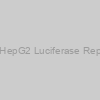 PZ-TR Stable HepG2 Luciferase Reporter Cell Line |
|
T3177 |
ABM |
1x10^6 cells / 1.0 ml |
EUR 3950 |
) SBE Luciferase Reporter Lentivirus (TGFβ/SMAD Pathway) |
|
79806 |
BPS Bioscience |
500 µl x 2 |
EUR 875 |
|
Description: The SBE Luciferase Reporter Lentivirus (TGFβ/SMAD signaling pathway) are replication incompetent, HIV-based, VSV-G pseudotyped lentiviral particles that are ready to be transduced into almost all types of mammalian cells, including primary and non-dividing cells. The particles contain a firefly luciferase gene driven by multimerized SBE-responsive element located upstream of the minimal TATA promoter. After transduction, activation of the TGFβ/SMAD signaling pathway can be monitored by measuring the luciferase activity._x000D_ |
 KIR3DL3/IL-2 Luciferase Reporter Jurkat Cell Line |
|
78322 |
BPS Bioscience |
2 vials |
EUR 10855 |
|
Description: Recombinant Jurkat cell line expressing firefly luciferase under the control of an IL-2-responsive promoter, and with constitutive expression of human KIR3DL3 (Killer Cell Immunoglobulin Like Receptor, Three Ig Domains and Long Cytoplasmic Tail 3; GenBank accession #BC143802.1 corresponding to KIR3DL3*00402 allele). HHLA2 (B7-H7) mediates an immune-stimulatory signal via TMIGD2 (Transmembrane and immunoglobulin domain containing 2; CD28H) in naïve T cells while it delivers an immune-inhibitory signal through KIR3DL3 in activated T cells and Natural Killer (NK) cells. |
 Hamster ATF6 Luciferase Reporter Cell Line- CHO-K1 |
|
ABC-RC0002 |
AcceGen |
1 vial |
Ask for price |
|
Description: Hamster ATF6 Luciferase Reporter Cell Line- CHO-K1 is derived from Chinese Hamster Ovary, and stably express firefly luciferase reporter gene under the control of ATF6 response element. This cell line is an ideal cellular model for monitoring the activation of Unfolded Protein Response, ER stress Signaling Pathway triggered by stimuli treatment, enforced gene expression and gene knockdown. |
 Human NRF2/ARE Luciferase Reporter Cell Line-MCF7 |
|
ABC-RC0036 |
AcceGen |
1 vial |
Ask for price |
|
Description: Human NRF2/ARE Luciferase Reporter Cell Line-MCF7 is derived from human breast cancer, and stably express firefly luciferase reporter gene under the control of the NRF2/ARE response element. This cell line is an ideal cellular model for monitoring the activation of Antioxidant Receptor Signaling Pathway triggered by stimuli treatment, enforced gene expression and gene knockdown. |
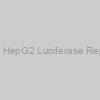 AZ-AHR Stable HepG2 Luciferase Reporter Cell Line |
|
T3102 |
ABM |
1x10^6 cells / 1.0 ml |
EUR 3950 |
 AIZ-AR Stable 22Rv1 Luciferase Reporter Cell Line |
|
T3104 |
ABM |
1x10^6 cells / 1.0 ml |
EUR 3950 |
 NFAT Luciferase-eGFP Reporter Jurkat Cell Line |
|
78662 |
BPS Bioscience |
2 vials |
EUR 2195 |
|
Description: Recombinant Jurkat T cells expressing both firefly luciferase and enhanced GFP (eGFP) under the control of NFAT response elements located upstream of the minimal TATA promoter. Activation of the NFAT signaling pathway can be monitored by examining either firefly luciferase or eGFP expression. |
) VSV-G Pseudotyped VSV Delta G (Luciferase Reporter) |
|
78634-1 |
BPS Bioscience |
100 µl |
EUR 795 |
|
Description: The VSV-G Pseudotyped VSV Delta G (Luciferase Reporter) was produced by re-expression of VSV-G as the envelope glycoprotein using the VSV Delta G system in which VSV-G is deleted. The pseudovirions contain the firefly luciferase gene; therefore, the VSV-G mediated cell entry can be measured via luciferase activity. The VSV-G Pseudotyped VSV Delta G (Luciferase Reporter) can be used as a positive control of transduction for other VSV pseudotypes containing the envelope glycoproteins of heterologous viruses in a Biosafety Level 2 facility. |
) VSV-G Pseudotyped VSV Delta G (Luciferase Reporter) |
|
78634-2 |
BPS Bioscience |
500 µl x 2 |
EUR 3995 |
|
Description: The VSV-G Pseudotyped VSV Delta G (Luciferase Reporter) was produced by re-expression of VSV-G as the envelope glycoprotein using the VSV Delta G system in which VSV-G is deleted. The pseudovirions contain the firefly luciferase gene; therefore, the VSV-G mediated cell entry can be measured via luciferase activity. The VSV-G Pseudotyped VSV Delta G (Luciferase Reporter) can be used as a positive control of transduction for other VSV pseudotypes containing the envelope glycoproteins of heterologous viruses in a Biosafety Level 2 facility. |
 Human ELK-TAD Luciferase Reporter Cell Line-HeLa |
|
ABC-RC0011 |
AcceGen |
1 vial |
Ask for price |
|
Description: Human ELK-TAD Luciferase Reporter Cell Line-HeLa is derived human cervical cancer, and stably express firefly luciferase reporter gene under the control of ELK response element. This cell line is an ideal cellular model for monitoring the activation of MAPK response Pathway triggered by stimuli treatment, enforced gene expression and gene knockdown. |
 Human NF-kB Luciferase Reporter Cell Line-Jurkat |
|
ABC-RC0030 |
AcceGen |
1 vial |
Ask for price |
|
Description: Human NFkB Luciferase Reporter Cell Line-Jurkat is is derived from human T lymphocyte cells, and stably express firefly luciferase reporter gene under the control of the NF-kB response enhancer element. This cell line is an ideal cellular model for monitoring the activation of NFkB pathway triggered by stimuli treatment, enforced gene expression and gene knockdown. |
 Human NRF2/ARE Luciferase Reporter Cell Line-HepG2 |
|
ABC-RC0035 |
AcceGen |
1 vial |
Ask for price |
|
Description: Human NRF2/ARE Luciferase Reporter Cell Line-HepG2 is derived from Human Liver cancer, and stably express firefly luciferase reporter gene under the control of NRF2/ARE response element.This cell line is an ideal cellular model for monitoring the activation of Antioxidant response Pathway triggered by stimuli treatment, enforced gene expression and gene knockdown. |
 Hippo Pathway TEAD Luciferase Reporter MCF7 cell line |
|
60618 |
BPS Bioscience |
2 vials |
EUR 2445 |
|
Description: The TEAD Reporter - MCF7 cell line contains the firefly luciferase gene under the control of TEAD responsive elements stably integrated into the human breast cancer cell line, MCF7. Inside the cells, basal unphosphorylated YAP/TAZ remains in the nucleus and induces the constitutive expression of luciferase reporter. The cell line is validated for the inhibition of the expression of luciferase reporter by the activators of the Hippo pathway. |
 Human NRF2/ARE Luciferase Reporter Cell Line-HEK293 |
|
ABC-RC0034 |
AcceGen |
1 vial |
Ask for price |
|
Description: Human NRF2/ARE Luciferase Reporter Cell Line-HEK293 is derived from Human embyronic kidney,and stably express firefly luciferase reporter gene under the control of NRF2/ARE response element.This cell line is an ideal cellular model for monitoring the activation of Antioxidant response Pathway triggered by stimuli treatment, enforced gene expression and gene knockdown. |
 Human INF-a/ISRE Luciferase Reporter Cell Line- HeLa |
|
ABC-RC0019 |
AcceGen |
1 vial |
Ask for price |
|
Description: Human INF-a/ISRE Luciferase Reporter Cell Line- HeLa is derived human cervical cancer, and stably express firefly luciferase reporter gene under the control of IFN-α/ISRE response element. This cell line is an ideal cellular model for monitoring the activation of TYK2 and JAK1 response Pathway triggered by stimuli treatment, enforced gene expression and gene knockdown. |
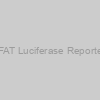 B2M Knockout NFAT Luciferase Reporter Jurkat Cell Line |
|
78363 |
BPS Bioscience |
2 vials |
EUR 11095 |
|
Description: B2M (Beta-2-Microglobulin) has been genetically removed by CRISPR/Cas9 genome editing from NFAT Luciferase Reporter Jurkat cells. Expression of the firefly luciferase gene is driven by NFAT response elements located upstream of the minimal TATA promoter. Activation of the NFAT signaling pathway in these cells can be monitored by measuring luciferase activity. |
 Human CHOP Luciferase Reporter Cell Line-Mia-Paca2 |
|
ABC-RC0007 |
AcceGen |
1 vial |
Ask for price |
|
Description: Human CHOP Luciferase Reporter Cell Line-Mia-Paca2 is derived from human pancreatic cancer, and stably express firefly luciferase reporter gene under the control of the Unfolded Protein Response, ER stress response element. This cell line is an ideal cellular model for monitoring the activation of Unfolded Protein Response, ER stress Receptor Signaling Pathway triggered by stimuli treatment, enforced gene expression and gene knockdown. |
 Human ELK-TAD Luciferase Reporter Cell Line-HEK293 |
|
ABC-RC0010 |
AcceGen |
1 vial |
Ask for price |
|
Description: Human ELK-TAD Luciferase Reporter Cell Line-HEK293 is derived human embryonic kidney, and stably express firefly luciferase reporter gene under the control of ELK response element. This cell line is an ideal cellular model for monitoring the activation of MAPK response Pathway triggered by stimuli treatment, enforced gene expression and gene knockdown. |
 Hamster TCF/LEF Luciferase Reporter Cell Line- CHO-K1 |
|
ABC-RC0003 |
AcceGen |
1 vial |
Ask for price |
|
Description: Hamster TCF/LEF Luciferase Reporter Cell Line- CHO-K1 is derived from Chinese Hamster Ovary, and stably express firefly luciferase reporter gene under the control of TCF/LEF response element. This cell line is an ideal cellular model for monitoring the activation of Wnt /b-catenin Signaling Pathway triggered by stimuli treatment, enforced gene expression and gene knockdown. |
 Mouse NRF2/ARE Luciferase Reporter Cell Line-NIH 3T3 |
|
ABC-RC0070 |
AcceGen |
1 vial |
Ask for price |
|
Description: Mouse NRF2/ARE Luciferase Reporter Cell Line-NIH 3T3 is derived from Mouse fibroblast, and stably express firefly luciferase reporter gene under the control of the NRF2/ARE response element. This cell line is an ideal cellular model for monitoring the activation of Antioxidant Response Pathway triggered by stimuli treatment, enforced gene expression and gene knockdown. |
) AP1 Luciferase Reporter Lentivirus (JNK Signaling Pathway) |
|
79823 |
BPS Bioscience |
500 µl x 2 |
EUR 795 |
|
Description: The stress-activated protein kinase/c-jun N-terminal kinase (SAPK/JNK) family of proteins includes mitogen-activated protein kinases (MAPKs) that are activated by stress, inflammatory cytokines, mitogens, oncogenes, and inducers of cell differentiation and morphogenesis. Upon activation of the SAPK/JNK pathway, MAP Kinase Kinases phosphorylate and activate JNKs. The activated JNKs translocate to the nucleus where they phosphorylate and activate transcription factors such as c-Jun. c-Jun then binds to the activator protein-1 (AP1) response element and induces AP1 transcription.
The AP1 Luciferase Reporter Lentivirus are replication incompetent, HIV-based, VSV-G pseudotyped lentiviral particles that are ready to be transduced into almost all types of mammalian cells, including primary and non-dividing cells. The particles contain a firefly luciferase gene driven by AP1 response element located upstream of the minimal TATA promoter. After transduction, activation of the JNK signaling pathway and AP1 mediated activity in the target cells can be monitored by measuring the luciferase activity. |
 Human AR Luciferase Reporter Cell Line-MDA-MB-453 |
|
ABC-RC0005 |
AcceGen |
1 vial |
Ask for price |
|
Description: Human AR Luciferase Reporter Cell Line-MDA-MB-453 is derived from human breast cancer,and stably express firefly luciferase reporter gene under the control of the AR response element. This cell line is an ideal cellular model for monitoring the activation of Androgen Receptor Pathway triggered by stimuli treatment, enforced gene expression and gene knockdown. |
 Human GR Luciferase Reporter Cell Line-MDA-MB-453 |
|
ABC-RC0015 |
AcceGen |
1 vial |
Ask for price |
|
Description: Human GR Luciferase Reporter Cell Line-MDA-MB-453 is derived from human breast cancer, and stably express firefly luciferase reporter gene under the control of the GR response element. This cell line is an ideal cellular model for monitoring the activation of Glucocorticoid Receptor Signaling Pathway triggered by stimuli treatment, enforced gene expression and gene knockdown. |
 Human NFkB Luciferase Reporter Cell Line- MDA-MB-231 |
|
ABC-RC0026 |
AcceGen |
1 vial |
Ask for price |
|
Description: Human NFkB Luciferase Reporter Cell Line- MDA-MB-231 is derived from Human breast cancer, and stably express firefly luciferase reporter gene under the control of NFkB response element. This cell line is an ideal cellular model for monitoring the activation of NFkB response Pathway triggered by stimuli treatment, enforced gene expression and gene knockdown. |
) Minicircle Single Reporter: EF1 Luciferase DNA (30 µg) |
|
BLIV511MC-1 |
SBI |
30 ug |
EUR 652 |
 Human SMAD/TGFbeta Luciferase Reporter Cell Line-HepG2 |
|
ABC-RC0039 |
AcceGen |
1 vial |
Ask for price |
|
Description: Human SMAD/TGFbeta Luciferase Reporter Cell Line-HepG2 is derived from human liver cancer, and stably express firefly luciferase reporter gene under the control of the SMAD 2/3 response element. This cell line is an ideal cellular model for monitoring the activation of TGFbeta pathway Receptor Signaling Pathway triggered by stimuli treatment, enforced gene expression and gene knockdown. |
 Luciferase HeLa Reporter Cell Line-Negative Control |
|
ABC-RC0062 |
AcceGen |
1 vial |
Ask for price |
|
Description: Luciferase HeLa Reporter Cell Line-Negative Control has been stably transfected with pTA-luciferase reporter vector, which contains no binding sites, a minimal promoter upstream of the firefly luciferase coding region. |
 Reporter Cell Line) Anti-BCMA CAR Jurkat/NFAT (Luciferase) Reporter Cell Line |
|
79694 |
BPS Bioscience |
2 vials |
EUR 9400 |
|
Description: The anti-BCMA CAR Jurkat/NFAT-luciferase reporter cell line is a stable cell line made from the anti-BCMA scFV CAR lentivirus (BPS Bioscience #79701). It has been validated for anti BCMA-CAR expression by FACS, and for functional activation stimulated by both soluble BCMA protein (BPS Bioscience #79467) and BCMA/CHO target cells (BPS Bioscience #79500). |
 Reporter Assay Kit) Single-Luciferase (Renilla) Reporter Assay Kit |
|
20-abx298011 |
Abbexa |
|
|
|
|
 NFAT Luciferase-eGFP Reporter Lentivirus-78656-G |
|
78656-G |
BPS Bioscience |
500 µl x 2 |
EUR 835 |
|
Description: The NFAT Luciferase-eGFP Reporter Lentiviruses are replication incompetent, HIV-based, VSV-G pseudotyped lentiviral particles that are ready to transduce almost all types of mammalian cells, including primary and non-dividing cells. The particles contain a firefly luciferase and eGFP cassette driven by the NFAT response element located upstream of the minimal TATA promoter (Figure 1) and a puromycin selection gene to generate stable clones. After transduction, activation of the NFAT signaling pathway in the target cells can be monitored by measuring the luciferase activity or eGFP expression. |
 NFAT Luciferase-eGFP Reporter Lentivirus-78656-P |
|
78656-P |
BPS Bioscience |
500 µl x 2 |
EUR 835 |
|
Description: The NFAT Luciferase-eGFP Reporter Lentiviruses are replication incompetent, HIV-based, VSV-G pseudotyped lentiviral particles that are ready to transduce almost all types of mammalian cells, including primary and non-dividing cells. The particles contain a firefly luciferase and eGFP cassette driven by the NFAT response element located upstream of the minimal TATA promoter (Figure 1) and a puromycin selection gene to generate stable clones. After transduction, activation of the NFAT signaling pathway in the target cells can be monitored by measuring the luciferase activity or eGFP expression. |
 Luciferase HepG2 Reporter Cell Line-Negative Control |
|
ABC-RC0063 |
AcceGen |
1 vial |
Ask for price |
|
Description: Luciferase HepG2 Reporter Cell Line-Negative Control has been stably transfected with pTA-luciferase reporter vector, which contains no binding sites, a minimal promoter upstream of the firefly luciferase coding region. |
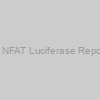 TCR/B2M Knockout NFAT Luciferase Reporter Jurkat Cell Line |
|
78557 |
BPS Bioscience |
2 vials |
EUR 16695 |
|
Description: This cell line is a double knockout of TCR (T Cell Receptor) and B2M (Beta-2-Microglobulin). First, the TRAC (T-Cell Receptor Alpha Constant) and the TRBC1 (T-Cell Receptor Beta Constant 1) domains of the TCRα/β chains were genetically removed by CRISPR/Cas9 genome editing from NFAT Luciferase Reporter Jurkat cells to generate the TCR Knockout NFAT Luciferase Reporter Jurkat cell Line (BPS Bioscience #78556). These TCR knockout cells were used to generate a new cell line in which B2M was also genetically removed by CRISPR/Cas9 genome editing. _x000D_Expression of the firefly luciferase gene is driven by NFAT response elements located upstream of the minimal TATA promoter. Activation of the NFAT signaling pathway in these cells can be monitored by measuring luciferase activity. |
 Mouse SMAD/TGFbeta Luciferase Reporter Cell Line-NIH 3T3 |
|
ABC-RC0071 |
AcceGen |
1 vial |
Ask for price |
|
Description: Mouse SMAD/TGFbeta Luciferase Reporter Cell Line-NIH 3T3 is derived from mouse fibroblast,and stably express firefly luciferase reporter gene under the control of SMAD 2/3 response element. This cell line is an ideal cellular model for monitoring the activation of TGFbeta Signaling Pathway triggered by stimuli treatment, enforced gene expression and gene knockdown. |
 CD160/NFAT - Luciferase Reporter - Jurkat Recombinant Cell Line |
|
79594 |
BPS Bioscience |
2 vials |
EUR 9400 |
|
Description: Recombinant Jurkat T cell expressing firefly luciferase gene under the control of NFAT response elements with constitutive expression of human CD160. CD160 is a GPIanchored glycoprotein member of the Ig superfamily, also known as BY55, NK1, and NK28. GenBank Accession # NM_007053._x000D__x000D_ |
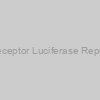 Human Estrogen Receptor Luciferase Reporter Cell Line-T47D |
|
ABC-RC0012 |
AcceGen |
1 vial |
Ask for price |
|
Description: Human Estrogen Receptor Luciferase Reporter Cell Line-T47D is derived from human breast cancer,and stably express firefly luciferase reporter gene under the control of the ER response element. This cell line is an ideal cellular model for monitoring the activation of Estrogen Receptor Signaling Pathway triggered by stimuli treatment, enforced gene expression and gene knockdown. |
) GAS Luciferase Reporter Lentivirus (IFN-γ/JAK/STAT1 Pathway) |
|
78653 |
BPS Bioscience |
500 µl x 2 |
EUR 835 |
|
Description: The GAS Luciferase Reporter Lentiviruses are replication incompetent, HIV-based, VSV-G pseudotyped lentiviral particles that are ready to transduce almost all types of mammalian cells, including primary and non-dividing cells. The particles contain a firefly luciferase gene driven by three copies of the interferon gamma (IFN-γ) activated sites (GAS) located upstream of the minimal TATA promoter and a puromycin selection gene for the selection of stable clones. After transduction, the GAS-regulated gene expression in the target cells can be monitored by measuring the luciferase activity. |
) ISRE Luciferase Reporter Lentivirus (JAK/STAT Signaling Pathway) |
|
79824 |
BPS Bioscience |
500 µl x 2 |
EUR 820 |
|
Description: The JAK/STAT pathway is activated by various cytokines and growth factors and plays a critical role in cell growth, hematopoiesis, and immune response. In mammals, there are four JAKs (JAK1, JAK2, JAK3 and TYK2) and seven STAT proteins. IFNα is a Type I interferon. Binding of IFNα to its receptor leads to the activation of JAK1 and TYK2, which in turn phosphorylate and activate STAT1 and STAT2. The phosphorylated STAT1 and 2 form a heterodimer and bind to IRF9/p48, forming a protein complex ISGF3. This complex translocates to the nucleus and binds to the ISRE (Interferon Stimulated Response Element) in the promoter region, thereby promoting transcription of interferon-inducible genes.
The ISRE Luciferase Reporter Lentivirus are replication incompetent, HIV-based, VSV-G pseudotyped lentiviral particles that are ready to be transduced into almost all types of mammalian cells, including primary and non-dividing cells. The particles contain a firefly luciferase gene driven by multimerized ISRE response element located upstream of the minimal TATA promoter. After transduction, the activity of Type I interferon-induced JAK/STAT signaling pathway in the target cells can be monitored by measuring the luciferase activity. |
 Pseudotyped Lentivirus (Luciferase Reporter)) Spike (SARS-CoV-2) Pseudotyped Lentivirus (Luciferase Reporter) |
|
79942-1 |
BPS Bioscience |
100 µl |
EUR 875 |
|
Description: The SARS-CoV-2 Spike Pseudotyped Lentivirus were produced with SARS-CoV-2 Spike (Genbank Accession #QHD43416.1) as the envelope glycoproteins instead of the commonly used VSV-G. These pseudovirions also contain the firefly luciferase gene driven by a CMV promoter, therefore, the spike-mediated cell entry can be conveniently measured via luciferase reporter activity. The SARS-CoV-2 Spike pseudotyped lentivirus can be used to measure the activity of neutralizing antibody against SARS-CoV-2 in a Biosafety Level 2 facility._x000D_ _x000D_ |
 Pseudotyped Lentivirus (Luciferase Reporter)) Spike (SARS-CoV-2) Pseudotyped Lentivirus (Luciferase Reporter) |
|
79942-2 |
BPS Bioscience |
500 µl x 2 |
EUR 4405 |
|
Description: The pandemic coronavirus disease 2019 (COVID-19) is caused by Severe Acute Respiratory Syndrome Coronavirus 2 (SARS-CoV-2). As the first step of the viral replication, the virus attaches to the host cell surface before entering the cell. The viral Spike protein recognizes and attaches to the Angiotensin-Converting Enzyme 2 (ACE2) receptor found on the surface of type I and II pneumocytes, endothelial cells, and ciliated bronchial epithelial cells. Drugs targeting the interaction between the Spike protein of SARS-CoV-2 and ACE2 may offer protection against the viral infection._x000D_The SARS-CoV-2 Spike Pseudotyped Lentivirus were produced with SARS-CoV-2 Spike (Genbank Accession #QHD43416.1) as the envelope glycoproteins instead of the commonly used VSV-G. These pseudovirions also contain the firefly luciferase gene driven by a CMV promoter, therefore, the spike-mediated cell entry can be conveniently measured via luciferase reporter activity. The SARS-CoV-2 Spike pseudotyped lentivirus can be used to measure the activity of neutralizing antibody against SARS-CoV-2 in a Biosafety Level 2 facility._x000D_ _x000D_ |
 Pseudotyped VSV Delta G (Luciferase Reporter)) Spike (SARS-CoV-2) Pseudotyped VSV Delta G (Luciferase Reporter) |
|
78637-1 |
BPS Bioscience |
100 µl |
EUR 795 |
|
Description: The Spike (SARS-CoV-2) Pseudotyped VSV Delta G (Luciferase Reporter) was produced with SARS-CoV-2 Spike corresponding to the initial strain (Genbank Accession #QHD43416.1) as the envelope glycoprotein instead of VSV-G. The pseudovirions contain the firefly luciferase gene; therefore, the spike-mediated cell entry can be measured via luciferase activity. The Spike (SARS-CoV-2) Pseudotyped VSV Delta G (Luciferase Reporter) can be used to measure the activity of a neutralizing antibody against SARS-CoV-2 in a Biosafety Level 2 facility.The Spike (SARS-CoV-2) Pseudotyped VSV Delta G (Luciferase Reporter) has been validated for use with target cells Vero-E6, Calu-3, and ACE2-HEK293 (BPS Bioscience #79951). Spike VSV Delta G are preferred for use in cells such as Vero-E6 and Calu-3.The infectivity of VSV-Delta G pseudotypes is restricted to a single round of replication, therefore the pseudotypes can be handled using BSL-2 containment practices. |
 Pseudotyped VSV Delta G (Luciferase Reporter)) Spike (SARS-CoV-2) Pseudotyped VSV Delta G (Luciferase Reporter) |
|
78637-2 |
BPS Bioscience |
500 µl x 2 |
EUR 3995 |
|
Description: The Spike (SARS-CoV-2) Pseudotyped VSV Delta G (Luciferase Reporter) was produced with SARS-CoV-2 Spike corresponding to the initial strain (Genbank Accession #QHD43416.1) as the envelope glycoprotein instead of VSV-G. The pseudovirions contain the firefly luciferase gene; therefore, the spike-mediated cell entry can be measured via luciferase activity. The Spike (SARS-CoV-2) Pseudotyped VSV Delta G (Luciferase Reporter) can be used to measure the activity of a neutralizing antibody against SARS-CoV-2 in a Biosafety Level 2 facility.The Spike (SARS-CoV-2) Pseudotyped VSV Delta G (Luciferase Reporter) has been validated for use with target cells Vero-E6, Calu-3, and ACE2-HEK293 (BPS Bioscience #79951). Spike VSV Delta G are preferred for use in cells such as Vero-E6 and Calu-3.The infectivity of VSV-Delta G pseudotypes is restricted to a single round of replication, therefore the pseudotypes can be handled using BSL-2 containment practices. |
) TCF/LEF Luciferase Reporter Lentivirus (Wnt/β-catenin Signaling Pathway) |
|
79787 |
BPS Bioscience |
500 µl x 2 |
EUR 875 |
|
Description: The TCF/LEF Luciferase Reporter Lentivirus are replication incompetent, HIV-based, VSV-G pseudotyped lentiviral particles that are ready to be transduced into almost all types of mammalian cells, including primary and non-dividing cells. The particles contain a firefly luciferase gene under the control of TCF/LEF-responsive element located upstream of the minimal TATA promoter. After transduction, activation of the Wnt/β-catenin signaling pathway in the target cells can be monitored by measuring the luciferase activity. |
 (SARS-CoV-2) Pseudotyped VSV Delta G (Luciferase Reporter)) Spike (D614G) (SARS-CoV-2) Pseudotyped VSV Delta G (Luciferase Reporter) |
|
78642-1 |
BPS Bioscience |
100 µl |
EUR 795 |
|
Description: The Spike (D614G) (SARS-CoV-2) Pseudotyped VSV Delta G (Luciferase Reporter) was produced with SARS-CoV-2 Spike (Genbank Accession #QHD43416.1; with D614G mutation) as the envelope glycoprotein instead of VSV-G. The pseudovirions contain the firefly luciferase gene; therefore, the spike-mediated cell entry can be measured via luciferase activity. The Spike (D614G) (SARS-CoV-2) Pseudotyped VSV Delta G (Luciferase Reporter) can be used to measure the activity of a neutralizing antibody against SARS-CoV-2 D614G variant in a Biosafety Level 2 facility.The Spike (D614G) (SARS-CoV-2) Pseudotyped VSV Delta G (Luciferase Reporter) has been validated for use with target cells Vero-E6 and ACE2-HEK293 (BPS Bioscience #79951). Spike VSV Delta G is preferred over lentiviral-based spike pseudoviruses for use in cells such as Vero-E6 parental cells. |
 (SARS-CoV-2) Pseudotyped VSV Delta G (Luciferase Reporter)) Spike (D614G) (SARS-CoV-2) Pseudotyped VSV Delta G (Luciferase Reporter) |
|
78642-2 |
BPS Bioscience |
500 µl x 2 |
EUR 3995 |
|
Description: The Spike (D614G) (SARS-CoV-2) Pseudotyped VSV Delta G (Luciferase Reporter) was produced with SARS-CoV-2 Spike (Genbank Accession #QHD43416.1; with D614G mutation) as the envelope glycoprotein instead of VSV-G. The pseudovirions contain the firefly luciferase gene; therefore, the spike-mediated cell entry can be measured via luciferase activity. The Spike (D614G) (SARS-CoV-2) Pseudotyped VSV Delta G (Luciferase Reporter) can be used to measure the activity of a neutralizing antibody against SARS-CoV-2 D614G variant in a Biosafety Level 2 facility.The Spike (D614G) (SARS-CoV-2) Pseudotyped VSV Delta G (Luciferase Reporter) has been validated for use with target cells Vero-E6 and ACE2-HEK293 (BPS Bioscience #79951). Spike VSV Delta G is preferred over lentiviral-based spike pseudoviruses for use in cells such as Vero-E6 parental cells. |
 Pseudotyped Lentivirus Pack (Luciferase Reporter)) Spike Variants (SARS-CoV-2) Pseudotyped Lentivirus Pack (Luciferase Reporter) |
|
78616 |
BPS Bioscience |
12 x 100 µl |
EUR 2795 |
|
Description: The pandemic coronavirus disease 2019 (COVID-19) is caused by Severe Acute Respiratory Syndrome Coronavirus 2 (SARS-CoV-2). As the first step of the viral replication, the virus attaches to the host cell surface before entering the cell. The viral Spike protein recognizes and attaches to the Angiotensin-Converting Enzyme 2 (ACE2) receptor found on the surface of type I and II pneumocytes, endothelial cells, and ciliated bronchial epithelial cells. Drugs targeting the interaction between the Spike protein of SARS-CoV-2 and human ACE2 may offer protection against the viral infection. Numerous SARS-CoV-2 variants have been identified so far. These variants contain a number of mutations that may increase morbidity and mortality and allow the virus to spread more easily and quickly than the original strain.BPS Bioscience has launched a series of Spike Variants (SARS-CoV-2) Pseudotyped Lentivirus (Luc reporter). The Spike (SARS-CoV-2) Pseudotyped Lentiviruses were produced with SARS-CoV-2 Spike Variant (see below for mutation details) as the envelope glycoproteins instead of the commonly used VSV-G. These pseudovirions contain the firefly luciferase gene driven by a CMV promoter, therefore, the spike-mediated cell entry can be measured via luciferase activity. The Spike Variants (SARS-CoV-2) Pseudotyped Lentivirus Pack (Luciferase Reporter) contains a collection of 12 Spike variants (SARS-CoV-2) Pseudotyped lentivirus (Luc reporter). It is a great tool to screen for variant-specific antibodies or to test the binding or efficacy of drug candidates against the different Spike variants. The Spike (SARS-CoV-2) pseudotyped lentiviruses can be used to measure the activity of neutralizing antibody against SARS-CoV-2 infection in a Biosafety Level 2 facility. |
 (SARS-CoV-2) Pseudotyped VSV Delta G (Luciferase Reporter)-100 µl) Spike (BA.1.1, Omicron Variant) (SARS-CoV-2) Pseudotyped VSV Delta G (Luciferase Reporter)-100 µl |
|
78641-1 |
BPS Bioscience |
100 µl |
EUR 795 |
|
Description: The Spike (BA.1.1, Omicron Variant) (SARS-CoV-2) Pseudotyped VSV Delta G (Luciferase Reporter) was produced with SARS-CoV-2 Spike (Genbank Accession #QHD43416.1 containing all the Omicron BA.1.1 mutations; see below for details) as the envelope glycoprotein instead of VSV-G. The pseudovirions contain the firefly luciferase gene; therefore, the spike-mediated cell entry can be measured via luciferase activity. The Spike (BA.1.1 Variant) (SARS-CoV-2) Pseudotyped VSV Delta G (Luciferase Reporter) can be used to measure the activity of a neutralizing antibody against SARS-CoV-2 BA.1.1 variant in a Biosafety Level 2 facility.As shown in Figures 1 and 2, the Spike (BA.1.1 Variant) (SARS-CoV-2) Pseudotyped VSV Delta G (Luciferase Reporter) has been validated for use with target cells Vero-E6 and ACE2-HEK293 (BPS Bioscience #79951). Spike VSV Delta G is preferred over lentiviral-based spike pseudoviruses for use in cells such as Vero-E6 parental cells.Spike Mutations in BA.1.1 Omicron Variant:A67V, Δ69-70, G142D, Δ143-145, Δ211, L212I, ins214EPE, G339D, R346K, S371L, S373P, S375F, K417N, N440K, G446S, S477N, T478K, E484A, Q493R, G496S, Q498R, N501Y, Y505H, T547K, D614G, H655Y, N679K, P681H, N764K, D796Y, N856K, T95I, Q954H, N969K, L981F |
 (SARS-CoV-2) Pseudotyped VSV Delta G (Luciferase Reporter)) Spike (B.1.617.2, Delta Variant) (SARS-CoV-2) Pseudotyped VSV Delta G (Luciferase Reporter) |
|
78640-1 |
BPS Bioscience |
100 µl |
EUR 795 |
|
Description: The Spike (B.1.617.2, Delta Variant) (SARS-CoV-2) Pseudotyped VSV Delta G (Luciferase Reporter) was produced with SARS-CoV-2 Spike (Genbank Accession #QHD43416.1 containing all the Delta B.1.617.2 mutations; see below for details) as the envelope glycoprotein instead of VSV-G. The pseudovirions contain the firefly luciferase gene; therefore, the spike-mediated cell entry can be measured via luciferase activity. The Spike (BA.1.617.2 Variant) (SARS-CoV-2) Pseudotyped VSV Delta G (Luciferase Reporter) can be used to measure the activity of a neutralizing antibody against SARS-CoV-2 B.1.617.2 variant in a Biosafety Level 2 facility.The Spike (B.1.617.2 Variant) (SARS-CoV-2) Pseudotyped VSV Delta G (Luciferase Reporter) has been validated for use with target cells Vero-E6 and ACE2-HEK293 (BPS Bioscience #79951). Spike VSV Delta G is preferred over lentiviral-based Spike pseudoviruses for use in cells such as Vero-E6 parental cells.Spike Mutations in B.1.617.2 Delta Variant:T19R, G142D, del156/157, R158G, L452R, T478K, D614G, P681R, D950N |
 (SARS-CoV-2) Pseudotyped VSV Delta G (Luciferase Reporter)) Spike (B.1.617.2, Delta Variant) (SARS-CoV-2) Pseudotyped VSV Delta G (Luciferase Reporter) |
|
78640-2 |
BPS Bioscience |
500 µl x 2 |
EUR 3995 |
|
Description: The Spike (B.1.617.2, Delta Variant) (SARS-CoV-2) Pseudotyped VSV Delta G (Luciferase Reporter) was produced with SARS-CoV-2 Spike (Genbank Accession #QHD43416.1 containing all the Delta B.1.617.2 mutations; see below for details) as the envelope glycoprotein instead of VSV-G. The pseudovirions contain the firefly luciferase gene; therefore, the spike-mediated cell entry can be measured via luciferase activity. The Spike (BA.1.617.2 Variant) (SARS-CoV-2) Pseudotyped VSV Delta G (Luciferase Reporter) can be used to measure the activity of a neutralizing antibody against SARS-CoV-2 B.1.617.2 variant in a Biosafety Level 2 facility.The Spike (B.1.617.2 Variant) (SARS-CoV-2) Pseudotyped VSV Delta G (Luciferase Reporter) has been validated for use with target cells Vero-E6 and ACE2-HEK293 (BPS Bioscience #79951). Spike VSV Delta G is preferred over lentiviral-based Spike pseudoviruses for use in cells such as Vero-E6 parental cells.Spike Mutations in B.1.617.2 Delta Variant:T19R, G142D, del156/157, R158G, L452R, T478K, D614G, P681R, D950N |
 (SARS-CoV-2) Pseudotyped Lentivirus (Luciferase Reporter)) Spike (BQ.1, Omicron Variant) (SARS-CoV-2) Pseudotyped Lentivirus (Luciferase Reporter) |
|
78697-1 |
BPS Bioscience |
100 µl |
EUR 835 |
Description: The pandemic coronavirus disease 2019 (COVID-19) is caused by Severe Acute Respiratory Syndrome Coronavirus 2 (SARS-CoV-2). As the first step of the viral replication, the virus attaches to the host cell surface before entering the cell. The viral Spike protein recognizes and attaches to the Angiotensin-Converting Enzyme 2 (ACE2) receptor found on the surface of type I and II pneumocytes, endothelial cells, and ciliated bronchial epithelial cells. Drugs targeting the interaction between the Spike protein of SARS-CoV-2 and ACE2 may offer protection against the viral infection. Omicron Variant was identified in South Africa in November of 2021. This variant has a large number of mutations that allow the virus to spread more easily and quickly than other variants. As of May 2022, Omicron variants were divided into seven distinct sub-lineages: BA.1, BA.1.1, BA.2, BA.3, BA.2.12.1, BA.4, and BA.5. As of October 2022, several new BA.5 sub-lineages (e.g. BQ.1, BQ.1.1, BF.7) have been designated._x000D_The spike protein of BQ.1 omicron variant has additional mutations (K444T and N460K) based on the BA.5 variant. The Spike (BQ.1, Omicron Variant) (SARS-CoV-2) Pseudotyped Lentiviruses were produced with SARS-CoV-2 Spike (Genbank Accession #QHD43416.1 containing all the Omicron BQ.1 mutations; see below for details) as the envelope glycoprotein instead of the commonly used VSV-G. These pseudovirions contain the firefly luciferase gene driven by a CMV promoter (Figure 1), therefore, the spike-mediated cell entry can be measured via luciferase activity. The Spike (BQ.1, Omicron Variant) (SARS-CoV-2) pseudovirus can be used to measure the activity of a neutralizing antibody against SARS-CoV-2 Omicron BQ.1 variant in a Biosafety Level 2 facility._x000D_  _x000D_Figure 1. Schematic of the Luciferase Reporter in SARS-CoV-2 Spike Pseudovirion._x000D_As shown in Figures 2 and 3 in Validation Data, the Spike Omicron BQ.1 pseudovirus has been validated for use with ACE2-HEK293 target cells (which overexpress ACE2; BPS Bioscience #79951)._x000D_Spike Mutations in BQ.1 Omicron Variant:_x000D_Del69-70, T19I, LPPA24-27S, G142D, V213G, G339D, S371F, S373P, S375F, T376A, D405N, R408S, K417N, N440K, K444T, L452R, N460K, S477N, T478K, E484A, F486V, Q498R, N501Y, Y505H, D614G, H655Y, N679K, P681H, N764K, D796Y, Q954H, N969K _x000D_Figure 1. Schematic of the Luciferase Reporter in SARS-CoV-2 Spike Pseudovirion._x000D_As shown in Figures 2 and 3 in Validation Data, the Spike Omicron BQ.1 pseudovirus has been validated for use with ACE2-HEK293 target cells (which overexpress ACE2; BPS Bioscience #79951)._x000D_Spike Mutations in BQ.1 Omicron Variant:_x000D_Del69-70, T19I, LPPA24-27S, G142D, V213G, G339D, S371F, S373P, S375F, T376A, D405N, R408S, K417N, N440K, K444T, L452R, N460K, S477N, T478K, E484A, F486V, Q498R, N501Y, Y505H, D614G, H655Y, N679K, P681H, N764K, D796Y, Q954H, N969K
|
 (SARS-CoV-2) Pseudotyped Lentivirus (Luciferase Reporter)) Spike (BQ.1, Omicron Variant) (SARS-CoV-2) Pseudotyped Lentivirus (Luciferase Reporter) |
|
78697-2 |
BPS Bioscience |
500 µl x 2 |
EUR 4195 |
Description: The pandemic coronavirus disease 2019 (COVID-19) is caused by Severe Acute Respiratory Syndrome Coronavirus 2 (SARS-CoV-2). As the first step of the viral replication, the virus attaches to the host cell surface before entering the cell. The viral Spike protein recognizes and attaches to the Angiotensin-Converting Enzyme 2 (ACE2) receptor found on the surface of type I and II pneumocytes, endothelial cells, and ciliated bronchial epithelial cells. Drugs targeting the interaction between the Spike protein of SARS-CoV-2 and ACE2 may offer protection against the viral infection. Omicron Variant was identified in South Africa in November of 2021. This variant has a large number of mutations that allow the virus to spread more easily and quickly than other variants. As of May 2022, Omicron variants were divided into seven distinct sub-lineages: BA.1, BA.1.1, BA.2, BA.3, BA.2.12.1, BA.4, and BA.5. As of October 2022, several new BA.5 sub-lineages (e.g. BQ.1, BQ.1.1, BF.7) have been designated._x000D_The spike protein of BQ.1 omicron variant has additional mutations (K444T and N460K) based on the BA.5 variant. The Spike (BQ.1, Omicron Variant) (SARS-CoV-2) Pseudotyped Lentiviruses were produced with SARS-CoV-2 Spike (Genbank Accession #QHD43416.1 containing all the Omicron BQ.1 mutations; see below for details) as the envelope glycoprotein instead of the commonly used VSV-G. These pseudovirions contain the firefly luciferase gene driven by a CMV promoter (Figure 1), therefore, the spike-mediated cell entry can be measured via luciferase activity. The Spike (BQ.1, Omicron Variant) (SARS-CoV-2) pseudovirus can be used to measure the activity of a neutralizing antibody against SARS-CoV-2 Omicron BQ.1 variant in a Biosafety Level 2 facility._x000D_  _x000D_Figure 1. Schematic of the Luciferase Reporter in SARS-CoV-2 Spike Pseudovirion._x000D_As shown in Figures 2 and 3 in Validation Data, the Spike Omicron BQ.1 pseudovirus has been validated for use with ACE2-HEK293 target cells (which overexpress ACE2; BPS Bioscience #79951)._x000D_Spike Mutations in BQ.1 Omicron Variant:_x000D_Del69-70, T19I, LPPA24-27S, G142D, V213G, G339D, S371F, S373P, S375F, T376A, D405N, R408S, K417N, N440K, K444T, L452R, N460K, S477N, T478K, E484A, F486V, Q498R, N501Y, Y505H, D614G, H655Y, N679K, P681H, N764K, D796Y, Q954H, N969K _x000D_Figure 1. Schematic of the Luciferase Reporter in SARS-CoV-2 Spike Pseudovirion._x000D_As shown in Figures 2 and 3 in Validation Data, the Spike Omicron BQ.1 pseudovirus has been validated for use with ACE2-HEK293 target cells (which overexpress ACE2; BPS Bioscience #79951)._x000D_Spike Mutations in BQ.1 Omicron Variant:_x000D_Del69-70, T19I, LPPA24-27S, G142D, V213G, G339D, S371F, S373P, S375F, T376A, D405N, R408S, K417N, N440K, K444T, L452R, N460K, S477N, T478K, E484A, F486V, Q498R, N501Y, Y505H, D614G, H655Y, N679K, P681H, N764K, D796Y, Q954H, N969K
|
 (SARS-CoV-2) Pseudotyped Lentivirus (Luciferase Reporter)) Spike (BQ.1.1, Omicron Variant) (SARS-CoV-2) Pseudotyped Lentivirus (Luciferase Reporter) |
|
78698-1 |
BPS Bioscience |
100 µl |
EUR 835 |
Description: The pandemic coronavirus disease 2019 (COVID-19) is caused by Severe Acute Respiratory Syndrome Coronavirus 2 (SARS-CoV-2). As the first step of the viral replication, the virus attaches to the host cell surface before entering the cell. The viral Spike protein recognizes and attaches to the Angiotensin-Converting Enzyme 2 (ACE2) receptor found on the surface of type I and II pneumocytes, endothelial cells, and ciliated bronchial epithelial cells. Drugs targeting the interaction between the Spike protein of SARS-CoV-2 and ACE2 may offer protection against the viral infection. Omicron Variant was identified in South Africa in November of 2021. This variant has a large number of mutations that allow the virus to spread more easily and quickly than other variants. As of May 2022, Omicron variants were divided into seven distinct sub-lineages: BA.1, BA.1.1, BA.2, BA.3, BA.2.12.1, BA.4, and BA.5. As of October 2022, several new BA.5 sub-lineages (e.g. BQ.1, BQ.1.1, BF.7) have been designated._x000D_The spike protein of BQ.1.1 omicron variant has additional mutations (R346T, K444T and N460K) based on the BA.5 variant. The Spike (BQ.1.1, Omicron Variant) (SARS-CoV-2) Pseudotyped Lentiviruses were produced with SARS-CoV-2 Spike (Genbank Accession #QHD43416.1 containing all the Omicron BQ.1.1 mutations; see below for details) as the envelope glycoprotein instead of the commonly used VSV-G. These pseudovirions contain the firefly luciferase gene driven by a CMV promoter (Figure 1), therefore, the spike-mediated cell entry can be measured via luciferase activity. The Spike (BQ.1.1, Omicron Variant) (SARS-CoV-2) pseudovirus can be used to measure the activity of a neutralizing antibody against SARS-CoV-2 Omicron BQ.1.1 variant in a Biosafety Level 2 facility._x000D_  _x000D_Figure 1. Schematic of the Luciferase Reporter in SARS-CoV-2 Spike Pseudovirion_x000D_As shown in Figures 2 and 3 in Validation Data, the Spike Omicron BQ.1.1 pseudovirus has been validated for use with ACE2-HEK293 target cells (which overexpress ACE2; BPS Bioscience #79951)._x000D_Spike Mutations in BQ.1.1 Omicron Variant:_x000D_Del69-70, T19I, LPPA24-27S, G142D, V213G, G339D, R346T, S371F, S373P, S375F, T376A, D405N, R408S, K417N, N440K, K444T, L452R, N460K, S477N, T478K, E484A, F486V, Q498R, N501Y, Y505H, D614G, H655Y, N679K, P681H, N764K, D796Y, Q954H, N969K _x000D_Figure 1. Schematic of the Luciferase Reporter in SARS-CoV-2 Spike Pseudovirion_x000D_As shown in Figures 2 and 3 in Validation Data, the Spike Omicron BQ.1.1 pseudovirus has been validated for use with ACE2-HEK293 target cells (which overexpress ACE2; BPS Bioscience #79951)._x000D_Spike Mutations in BQ.1.1 Omicron Variant:_x000D_Del69-70, T19I, LPPA24-27S, G142D, V213G, G339D, R346T, S371F, S373P, S375F, T376A, D405N, R408S, K417N, N440K, K444T, L452R, N460K, S477N, T478K, E484A, F486V, Q498R, N501Y, Y505H, D614G, H655Y, N679K, P681H, N764K, D796Y, Q954H, N969K
|
 (SARS-CoV-2) Pseudotyped Lentivirus (Luciferase Reporter)) Spike (BQ.1.1, Omicron Variant) (SARS-CoV-2) Pseudotyped Lentivirus (Luciferase Reporter) |
|
78698-2 |
BPS Bioscience |
500 µl x 2 |
EUR 4195 |
Description: The pandemic coronavirus disease 2019 (COVID-19) is caused by Severe Acute Respiratory Syndrome Coronavirus 2 (SARS-CoV-2). As the first step of the viral replication, the virus attaches to the host cell surface before entering the cell. The viral Spike protein recognizes and attaches to the Angiotensin-Converting Enzyme 2 (ACE2) receptor found on the surface of type I and II pneumocytes, endothelial cells, and ciliated bronchial epithelial cells. Drugs targeting the interaction between the Spike protein of SARS-CoV-2 and ACE2 may offer protection against the viral infection. Omicron Variant was identified in South Africa in November of 2021. This variant has a large number of mutations that allow the virus to spread more easily and quickly than other variants. As of May 2022, Omicron variants were divided into seven distinct sub-lineages: BA.1, BA.1.1, BA.2, BA.3, BA.2.12.1, BA.4, and BA.5. As of October 2022, several new BA.5 sub-lineages (e.g. BQ.1, BQ.1.1, BF.7) have been designated._x000D_The spike protein of BQ.1.1 omicron variant has additional mutations (R346T, K444T and N460K) based on the BA.5 variant. The Spike (BQ.1.1, Omicron Variant) (SARS-CoV-2) Pseudotyped Lentiviruses were produced with SARS-CoV-2 Spike (Genbank Accession #QHD43416.1 containing all the Omicron BQ.1.1 mutations; see below for details) as the envelope glycoprotein instead of the commonly used VSV-G. These pseudovirions contain the firefly luciferase gene driven by a CMV promoter (Figure 1), therefore, the spike-mediated cell entry can be measured via luciferase activity. The Spike (BQ.1.1, Omicron Variant) (SARS-CoV-2) pseudovirus can be used to measure the activity of a neutralizing antibody against SARS-CoV-2 Omicron BQ.1.1 variant in a Biosafety Level 2 facility._x000D_  _x000D_Figure 1. Schematic of the Luciferase Reporter in SARS-CoV-2 Spike Pseudovirion_x000D_As shown in Figures 2 and 3 in Validation Data, the Spike Omicron BQ.1.1 pseudovirus has been validated for use with ACE2-HEK293 target cells (which overexpress ACE2; BPS Bioscience #79951)._x000D_Spike Mutations in BQ.1.1 Omicron Variant:_x000D_Del69-70, T19I, LPPA24-27S, G142D, V213G, G339D, R346T, S371F, S373P, S375F, T376A, D405N, R408S, K417N, N440K, K444T, L452R, N460K, S477N, T478K, E484A, F486V, Q498R, N501Y, Y505H, D614G, H655Y, N679K, P681H, N764K, D796Y, Q954H, N969K _x000D_Figure 1. Schematic of the Luciferase Reporter in SARS-CoV-2 Spike Pseudovirion_x000D_As shown in Figures 2 and 3 in Validation Data, the Spike Omicron BQ.1.1 pseudovirus has been validated for use with ACE2-HEK293 target cells (which overexpress ACE2; BPS Bioscience #79951)._x000D_Spike Mutations in BQ.1.1 Omicron Variant:_x000D_Del69-70, T19I, LPPA24-27S, G142D, V213G, G339D, R346T, S371F, S373P, S375F, T376A, D405N, R408S, K417N, N440K, K444T, L452R, N460K, S477N, T478K, E484A, F486V, Q498R, N501Y, Y505H, D614G, H655Y, N679K, P681H, N764K, D796Y, Q954H, N969K
|
 (SARS-CoV-2) Pseudotyped Lentivirus (Luciferase Reporter)) Spike (BF.7, Omicron Variant) (SARS-CoV-2) Pseudotyped Lentivirus (Luciferase Reporter) |
|
78699-1 |
BPS Bioscience |
100 µl |
EUR 835 |
Description: The pandemic coronavirus disease 2019 (COVID-19) is caused by Severe Acute Respiratory Syndrome Coronavirus 2 (SARS-CoV-2). As the first step of the viral replication, the virus attaches to the host cell surface before entering the cell. The viral Spike protein recognizes and attaches to the Angiotensin-Converting Enzyme 2 (ACE2) receptor found on the surface of type I and II pneumocytes, endothelial cells, and ciliated bronchial epithelial cells. Drugs targeting the interaction between the Spike protein of SARS-CoV-2 and ACE2 may offer protection against the viral infection. Omicron Variant was identified in South Africa in November of 2021. This variant has a large number of mutations that allow the virus to spread more easily and quickly than other variants. As of May 2022, Omicron variants were divided into seven distinct sub-lineages: BA.1, BA.1.1, BA.2, BA.3, BA.2.12.1, BA.4, and BA.5. As of October 2022, several new BA.5 sub-lineages (e.g. BQ.1, BQ.1.1, BF.7) have been designated._x000D_The spike protein of BF.7 omicron variant has additional mutation R346T based on the BA.5 variant. The Spike (BF.7, Omicron Variant) (SARS-CoV-2) Pseudotyped Lentiviruses were produced with SARS-CoV-2 Spike (Genbank Accession #QHD43416.1 containing all the Omicron BF.7 mutations; see below for details) as the envelope glycoprotein instead of the commonly used VSV-G. These pseudovirions contain the firefly luciferase gene driven by a CMV promoter (Figure 1), therefore, the spike-mediated cell entry can be measured via luciferase activity. The Spike (BF.7, Omicron Variant) (SARS-CoV-2) pseudovirus can be used to measure the activity of a neutralizing antibody against SARS-CoV-2 Omicron BF.7 variant in a Biosafety Level 2 facility._x000D_  _x000D_Figure 1. Schematic of the Luciferase Reporter in SARS-CoV-2 Spike Pseudovirion._x000D_As shown in Figures 2 and 3 in Validation Data, the Spike Omicron BF.7 pseudovirus has been validated for use with ACE2-HEK293 target cells (which overexpress ACE2; BPS Bioscience #79951)._x000D_Spike Mutations in BF.7 Omicron Variant:_x000D_Del69-70, T19I, LPPA24-27S, G142D, V213G, G339D, R346T, S371F, S373P, S375F, T376A, D405N, R408S, K417N, N440K, L452R, S477N, T478K, E484A, F486V, Q498R, N501Y, Y505H, D614G, H655Y, N679K, P681H, N764K, D796Y, Q954H, N969K _x000D_Figure 1. Schematic of the Luciferase Reporter in SARS-CoV-2 Spike Pseudovirion._x000D_As shown in Figures 2 and 3 in Validation Data, the Spike Omicron BF.7 pseudovirus has been validated for use with ACE2-HEK293 target cells (which overexpress ACE2; BPS Bioscience #79951)._x000D_Spike Mutations in BF.7 Omicron Variant:_x000D_Del69-70, T19I, LPPA24-27S, G142D, V213G, G339D, R346T, S371F, S373P, S375F, T376A, D405N, R408S, K417N, N440K, L452R, S477N, T478K, E484A, F486V, Q498R, N501Y, Y505H, D614G, H655Y, N679K, P681H, N764K, D796Y, Q954H, N969K
|
 (SARS-CoV-2) Pseudotyped Lentivirus (Luciferase Reporter)) Spike (BF.7, Omicron Variant) (SARS-CoV-2) Pseudotyped Lentivirus (Luciferase Reporter) |
|
78699-2 |
BPS Bioscience |
500 µl x 2 |
EUR 4195 |
Description: The pandemic coronavirus disease 2019 (COVID-19) is caused by Severe Acute Respiratory Syndrome Coronavirus 2 (SARS-CoV-2). As the first step of the viral replication, the virus attaches to the host cell surface before entering the cell. The viral Spike protein recognizes and attaches to the Angiotensin-Converting Enzyme 2 (ACE2) receptor found on the surface of type I and II pneumocytes, endothelial cells, and ciliated bronchial epithelial cells. Drugs targeting the interaction between the Spike protein of SARS-CoV-2 and ACE2 may offer protection against the viral infection. Omicron Variant was identified in South Africa in November of 2021. This variant has a large number of mutations that allow the virus to spread more easily and quickly than other variants. As of May 2022, Omicron variants were divided into seven distinct sub-lineages: BA.1, BA.1.1, BA.2, BA.3, BA.2.12.1, BA.4, and BA.5. As of October 2022, several new BA.5 sub-lineages (e.g. BQ.1, BQ.1.1, BF.7) have been designated._x000D_The spike protein of BF.7 omicron variant has additional mutation R346T based on the BA.5 variant. The Spike (BF.7, Omicron Variant) (SARS-CoV-2) Pseudotyped Lentiviruses were produced with SARS-CoV-2 Spike (Genbank Accession #QHD43416.1 containing all the Omicron BF.7 mutations; see below for details) as the envelope glycoprotein instead of the commonly used VSV-G. These pseudovirions contain the firefly luciferase gene driven by a CMV promoter (Figure 1), therefore, the spike-mediated cell entry can be measured via luciferase activity. The Spike (BF.7, Omicron Variant) (SARS-CoV-2) pseudovirus can be used to measure the activity of a neutralizing antibody against SARS-CoV-2 Omicron BF.7 variant in a Biosafety Level 2 facility._x000D_  _x000D_Figure 1. Schematic of the Luciferase Reporter in SARS-CoV-2 Spike Pseudovirion._x000D_As shown in Figures 2 and 3 in Validation Data, the Spike Omicron BF.7 pseudovirus has been validated for use with ACE2-HEK293 target cells (which overexpress ACE2; BPS Bioscience #79951)._x000D_Spike Mutations in BF.7 Omicron Variant:_x000D_Del69-70, T19I, LPPA24-27S, G142D, V213G, G339D, R346T, S371F, S373P, S375F, T376A, D405N, R408S, K417N, N440K, L452R, S477N, T478K, E484A, F486V, Q498R, N501Y, Y505H, D614G, H655Y, N679K, P681H, N764K, D796Y, Q954H, N969K _x000D_Figure 1. Schematic of the Luciferase Reporter in SARS-CoV-2 Spike Pseudovirion._x000D_As shown in Figures 2 and 3 in Validation Data, the Spike Omicron BF.7 pseudovirus has been validated for use with ACE2-HEK293 target cells (which overexpress ACE2; BPS Bioscience #79951)._x000D_Spike Mutations in BF.7 Omicron Variant:_x000D_Del69-70, T19I, LPPA24-27S, G142D, V213G, G339D, R346T, S371F, S373P, S375F, T376A, D405N, R408S, K417N, N440K, L452R, S477N, T478K, E484A, F486V, Q498R, N501Y, Y505H, D614G, H655Y, N679K, P681H, N764K, D796Y, Q954H, N969K
|
Transgenic crops have been additionally remodeled with genes from numerous species for drought tolerance. The UK (principally with transgenesis and site-specific nucleases) and France (with no transgenic instruments however with MAS and site-specific nucleases) are the primary nations finishing up analysis applications for each biotic stress and drought tolerance. Thus, few European nations used transgenesis for gluten protein composition and RNAi-mediated silencing in celiac illness. Because of vandalism discipline trials of transgenics dropped since 2000. No transgenic wheat is cultivated in Europe for political causes.



